Almost exactly one year to the day after announcing the Elite Tuo trainer, Elite finally started shipping the thing last month. To their credit, the reason they held back was that the accuracy of the unit wasn’t where they wanted it to be a year ago, so they kept engineering to get it where they wanted it. Of course, I’ll dive into details on whether or not they achieved that goal, or just gave up and shipped it.
Of course, for some people it’s not the Tuo’s toaster-like appearances that are most notable, but rather the fact that it’s a wheel-on trainer. These days, that type of trainer is mostly going out of style (compared to a wheel-off, direct-drive trainer). However, in reality, the wheel-on trainer remains incredibly popular in the sub-$500 price point. After all, there are no direct-drive trainers in that range.
But in reality, the most notable thing about the Tuo is actually the road-feel. Wheel-on trainers have a well-deserved reputation for having poor road-like feel. However, last year when I first tried this on a trade-show floor I was blown away by how good it felt. To the point I questioned if perhaps trade-show lack of sleep was contributing. However, after a few other industry folks I know that also jumped on it for a few seconds confirmed my thoughts, I was then eager to try it out in real-life with my own bike (and side by side to others).
I’ve now had that opportunity. And thus, here’s my data-driven in-depth review. And, you can hit that play button below to dive straight into all sorts of toaster fun:

Note that this Elite Tuo media loaner was sent over by Elite to try out. As usual, it’ll go back to them in Italy, afterwards. If you found this review useful, feel free to hit up the links at the end of the site, or consider becoming a DCR Supporter. With that – let’s begin!
The Tech Specs:
Normally this section would be a ‘What’s new’ compared to the last edition. But in the case of the Tuo, there is no last edition. At least not in any formal way. This is the first toaster Elite has made, though, they’ve made countless wheel-on trainers over the years. However, deciding exactly which one grew up to bread crisper is a tall order.
Thus, we’re just gonna do a quick roll of the main tech specs before we start the normal review bits. Here we go:
– Price: $529USD/499EUR…and finally shipping
– Wheel-on trainer, clamp lever design
– Max Resistance: 1,300w (40KPH)
– Max Incline Simulation: 10%
– Accuracy level: +/- 5.0%
– Trainer Control: ANT+ FE-C & Bluetooth Smart FTMS
– Power Transmission: Both ANT+ & Bluetooth Smart open power signals
– Cadence Transmission: Yes
– Looks like a sliced bread cooking machine: Yes
– Compatibility: Quick Release for road/mountain bikes (130/135 x 5mm), and thru-axle for 142x12mm included (with Boost 148x12mm accessory adapter available)
– Weight of trainer: 10.3KG/22.7lbs
Got all that? Good. Let’s get it out of the box and built.
What’s in the box:
Above, is the box for the Elite Tuo, which falls in line with most of the other Elite boxes as of late. As we’ll soon discover, it’s not assembled out of the box, which is pretty common on less expensive trainers.
After laying the main parts sets out, we’ll debox again, and find all the pieces for assembly. It’s not a ton of pieces per se, but rather, some of them are just slow to assemble (such as some small screws on the underside of the Tuo). None of it is hard – if you can put batteries in a children’s toy, you can assemble the Tuo.
Looking closely at the parts, you’ve got the main resistance unit – that’s the silver thing:
Then there’s a small pile of papers with discount codes for apps and such. Oh, and the manual is in there:
There’s also a quick skewer, thru-axle adapters, and power cord:
And then some of the parts you’ll need to attach the Tuo onto the frame, using a bracket of sorts.
With that out of the way, let’s get into assembly.
Setup:
It’s been a long time since I’ve had to include a ‘setup’ section in a trainer review. A very long time. These days for many trainers you just take the trainer out of the box and you’re done, or at worst you have to attach legs and a cassette. And Elite’s other latest offerings are really the pinnacle of that, ready to use within 15 seconds.
The Tuo?
Nope, this toaster isn’t that kinda gal (or guy).
Instead, you’re gonna spent 15 minutes attempting to decipher the instructions, then another 15 minutes installing it the wrong way. A few seconds second-guessing yourself, and then realizing you did it wrong. After which you’ll undo everything, re-do it again, and then realize you actually did have it right the first time.
I mean, just talking about a friend of course.
In all seriousness, it’s a dumpster fire. But the good news is that as long as you simply read the few lines below – I’ll make it easy for you. And none of it is technically hard. It’s just unclear. The actual build, with good instructions, would take at most 3-5 minutes.
So, here’s where you start:
Then you’re going to put the Tuo frame upside-down on the Tuo, which is when you decide which ‘channel’ to put the Tuo into. There’s basically two alignment sots.
To figure out which one you need, it asks you if you’re using 28” tires or not. Ok…so…umm…I have no idea how big a road tire is. Seriously, I don’t. I know some mountain bike tires are 29’ers (short for 29”), and I know that my road bike tire is a 700c. But 28”? No effin clue. Turns out – in case you’re curious, a 700c road bike tire is 28”. So no, it’s not bigger than 28”.
Once you’ve done that, you’ll finish attaching the bracket and Tuo slowly with a small pile of screws. There’s also a rubber stopper or two to attach as well. Again, none of this is remotely hard. It’s just a bit slow. Once you’re done, it’ll look like this:
Crap, I did the instructions wrong. So you’ll start second-guessing yourself, and then you’ll take it all apart and put it on the other channel.
Only to realize you had it right the first time, but just didn’t think to undo the spinning knob all the way to make room for the tire.
This is largely because the manual is so incredibly complex it’s useless. A sentiment shared by a number of DCR Readers (as well as sports tech trainer reviewer friends of mine).
Now, since my initial setup feedback a month ago when I did this the first time, Elite has worked to put together a quick setup video on YouTube, and is also updating their written instructions to make it less confusing.
Until then, here’s some quick assembly tips for doing it yourself:
Elite Tuo Assembly Top Tips:
1) Basically, you’ve gotta decide whether the Tuo will sit on the forward holes or the rear holes. Essentially, if you’ve got a road bike, then you’ll configure it like the photos in this review. Whereas, if you’ve got a mountain bike, you’ll configure it on the other hole/channel.
2) Once you’ve got that done, ensure you rotate the lower knob all the way nice and tight, else, you’ll get inaccurate results.
3) Ensure the locking latch is in the unlocked position
4) Then, rotate the upper knob outbound enough so your wheel will fit. You’ll notice it moves the Tuo very slowly, so much so you might not have noticed it does anything.
Once that’s set, then you mount your bike and follow my calibration instructions below.
Again, it’s not hard. And if you simply follow my four steps above, you’ll be up and running in no time.
The Basics:
With the trainer assembled, you’ll unfold the legs and set it up. When folded, the trainer will store more easily, though not quite as flat as some other wheel-on trainers, mostly due to the toaster at the back.
The Tuo comes with a rear trainer skewer, which you’ll want to put on your bike if you don’t already have one on there. A trainer skewer is metal on both ends, and can support your bike properly, else a typical skewer that came with your bike is plastic on both ends, and won’t support it (or even fit correctly). I use the trainer skewer both inside and out. Some people will go back to their regular skewer for races, but I rarely remember.
You’ll need to plug in the Tuo in order to get transmission of power data, as well as resistance control. Here’s a close-up of the power adapter, in case you have to figure out which one it is in a pile of power cables some day:
It’ll connect to the rear of the trainer, where you can see the LED status lights just above it. These lights indicate power (that it’s on), Bluetooth connectivity (Blue), and ANT+ connectivity (Green).
To install your bike you’ll open the side mounting handle, as well as flip the rear switch to the left, which moves the Tuo backwards away from the trainer frame.
Stick your bike in the frame, and then adjust the metal prongs so that they’re closer to the skewer. Then close the latch, which will make it nice and tight.
Oh, if you haven’t pumped up your tire yet, then undo the latch we just closed on the rear of the trainer, and pump up your tire to 110PSI/7.5bar – the specifics matter here. Don’t be free-styling this – just trust me, use these values (because this is what Elite uses, and it makes a difference for wheel-on trainers). Then, on the back of the trainer, you’ll adjust the upper knob (that’s basically inside the lever) to just barely touch the tire.
After that’s done, then close the lever to the right, so it’ll press on the tire nice and tight.
There are some key steps to getting the Elite Toaster to work consistently from a power accuracy standpoint. Aside from pumping up your tire, in my experience the rest of the steps only need to be done once a month or so.
1) Pump up your tire to 110PSI (7.5 bar)
2) Do a 10-15 minute warmup on the trainer
3) Get off bike, and unlock the Tuo lever (so, it’ll slide the unit away from your tire)
4) Now, adjust the upper rear knob so that the tire just *BARELY* touches the roller
5) Now close the lever, so it presses on nice and tight
6) Do a calibration roll-down.
7) You’re done.
Now, all you need to do every subsequent time with the Tuo is simply ensure that your tire is pumped up to the same 110PSI value. To prove this, I haven’t re-done the calibration since mid-September, and the rides you see in this review include basically spot-on accuracy data from this morning.
Oh, and before we start riding, if you haven’t done so yet, stick a wheel-block up under the front of the wheel. This both makes the bike level, but also keeps your front wheel from wobbling all over the place.
You can also use the new Elite Sterzo Smart if you want to control steering in Zwift:
And now, let’s start riding.
Given the Elite Tuo is a smart trainer, it’ll change resistance automatically in a few different ways, primarily driven by different applications/methods. But most of this all boils down to two core methods:
ERG Mode: Setting a specific power level –i.e., 215w. In this mode, no matter what gearing you use, the trainer will simply stay at 215w (or whatever you set it to).
Simulation (SIM) Mode: Simulating a specific outdoor grade – i.e., 8% incline. In this mode, it’s just like outdoors in that you can change your gearing to make it easier or harder. Wattage is not hard-set, only incline levels.
In the case of simulation (aka slope) mode, the Tuo can simulate from 0% to 10% incline – which is slightly less than the 12% gradient simulation of the competing Wahoo KICKR SNAP wheel-on trainer. But it’s also kinda in the sweet spot. The vast majority of climbing people do is below 10%. And if you go above that, it’s not as if the trainer stops – it simply doesn’t simulate it as well. Note though that if you’re a heavier rider, this is where you can get into issues with low-speed climbing at high intensities.
One other thing to keep in mind is that within Zwift, by default it halves the grade values anyway. A 10% grade feels like a 5% grade. You need to change the ‘Trainer Difficulty’ level to 100% (seen below) in order to feel it (and most people don’t bother to).
In my testing on Zwift, at 100% trainer difficulty, with numerous climbs just under 10%, it felt fine, and the resistance correctly smoothly applied while going through the rollers on the Titans Grove course.
The second mode the trainer has is ERG mode. In that case, the company claims up to 1,300w of resistance at 40KPH. Although, realistically, you don’t care about that. I can only barely (maybe) break 1,000w for a second or two. For comparison, most pros are going to top-out in the 1,600-1,800 range. And ultimately, if you’re breaking the 1,000w barrier frequently, you probably really want a direct-drive trainer anyway.
So what about road feel and noise?
Like I always say – for me personally, it’s hard to separate the fact that I’m riding indoors from outdoors. It’s still a trainer, and I’m still looking at a wall in front of me. My brain can only turn off so much of that. Still, much of the road-like feel is driven by the flywheel, and be it physical or virtual, flywheel sizes tend to be measured in weight. This impacts inertia and how it feels – primarily when you accelerate or otherwise change acceleration (such as briefly coasting).
All that prefacing done, the Elite Tuo blew me away here. When I first stepped on it a year ago at the Eurobike trade show, I couldn’t believe I was actually on a wheel-on trainer. Historically speaking road-feel on a wheel-on trainer is iffy at best. The press-on force typically required to avoid slippage reduces the natural acceleration and deceleration, and adding to that, most wheel-on trainers have pretty small flywheels.
And yet, this felt really really really good. Sure, it wasn’t on the same level as a $1,200 Wahoo KICKR, but it wasn’t that much different than an Elite Direto XR or other more expensive Elite trainer. So kudos to them on surprising me.
And as for sound? Well, it’s not quiet. That’s for sure.
It’s a wheel-on trainer, thus, you’re going to have the noise of the tire against the roller, and depending on how fast you go, that’s gonna be pretty loud. Far louder than most other trainers on the market today, because most other trainers aren’t wheel-on trainers. And that’s fine. If you’re out in a garage, nobody cares. Or, if you’ve got a dedicated room in your home, nobody cares. But if you’re trying to do workouts with a sleeping baby in a small apartment – this isn’t the trainer for you.
I’ve included an audio section in the video at the top of this post. As well as a bit of a discussion on vibrations, which can be pretty meaningful here. But again, a better choice, if both of those are of concern, is a direct-drive trainer.
Ok, with all the basics out of the way, let’s talk app compatibility.
App Compatibility:
The Tuo follows the same app compatibility standards as previous Elite products, and essentially follows the industry norms as you’d expect from a high-end trainer. As you probably know, apps like Zwift, TrainerRoad, SufferFest, Rouvy, Kinomap, and many more all support most of these industry standards, making it easy to use whatever app you’d like. If trainers or apps don’t support these standards, then it makes it far more difficult for you as the end user.
Thankfully, that’s not the case here. The Tuo transmits data on both ANT+ & Bluetooth Smart, as well as allowing interactive resistance control across both ANT+ & Bluetooth Smart. By applying resistance control, apps can simulate climbs as well as set specific wattage targets.
The unit supports the following protocols and transmission standards:
ANT+ FE-C (Trainer Control): This is for controlling the trainer via ANT+ from apps and head units (with cadence/power data). Read tons about it here.
ANT+ Power Meter Profile: This broadcasts as a standard ANT+ power meter, with cadence and speed data
ANT+ Speed/Cadence Profile: This broadcasts your speed and cadence as a standard ANT+ Speed/Cadence combo sensor
Bluetooth Smart Power Meter Profile: This broadcasts as a standard BLE power meter, with cadence and speed data
Bluetooth Smart Speed/Cadence Profile: This broadcasts your speed and cadence as a standard BLE combo Speed/Cadence sensor
Bluetooth Smart FTMS (Trainer Control): This allows apps to control the Tuo over Bluetooth Smart (with cadence/power data)
Between all these standards you can basically connect to anything and everything you’d ever want to. Be it a bike computer or watch, or an app – it’ll be supported. In fact, Elite’s really been one of the leaders for years in supporting the various standards – including FTMS.
In the above, you’ll note there’s cadence data baked into the various streams. That’s handy if you’re connecting to Zwift on an Apple TV, due to Apple TV’s two concurrent Bluetooth Smart sensor limitation (plus the Apple TV remote). This means you can pair the trainer and get power/cadence/control, while also pairing up a heart rate strap.
For me, in my testing, I used Zwift and TrainerRoad as my two main apps (which are the two main apps I use personally). In the case of Zwift, I used it in regular riding mode (non-workout mode, aka SIM mode) as well as ERG mode (workout mode). Whereas in the case of TrainerRoad I used it in a structured workout mode (ERG mode). I dig into the nuances of these both within the power accuracy section.
Starting with Zwift, you can see the Tuo listed as not just a controllable trainer, but also within the regular power meter and cadence section. You’ll want to pair it up as a controllable trainer (which will also pair it as a power meter) – as seen above.
You’ll see the trainer enumerated in a fairly similar manner on TrainerRoad as well:
Also, TrainerRoad’s tips page on using smart trainers in ERG mode:
As far as calibration goes, you can complete it easily from most apps – including TrainerRoad and Zwift. You’ll see either a calibration prompt in the app (like TrainerRoad), or a small wrench or such in the settings (like Zwift). For example, here it is doing the spin-down within TrainerRoad on an iPad:
It’s super easy to do, you just pedal a bit fast for a moment until it reaches a given threshold speed, and then you stop pedaling. It’s going to measure how long it takes to coast to a stop. Super easy. And here on Zwift:
In general, you should calibrate every once in a while (perhaps every few weeks), or anytime you’ve moved the trainer some distance (like to a new home/etc…). Additionally, you should calibrate if you’ve had a major temperature swing (such as if it lives in your garage and now the sweat puddle on the floor is frozen). In my case, I last calibrated it over a month ago, and it’s been spot-on since.
Finally, Elite does have their own app that you can use for a handful of functions, but frankly I had no use for it here at any point in the testing cycle. And technically, there are two apps here. The first is their Elite My E-Training app, from which you can do calibrations:
As with most trainers, they recommend you warm-up first:
And then there’s the Elite Upgrado app – which actually launched in the fall of 2019 for updating Elite trainers (finally!). This allows you to do firmware updates of the trainer. Simply crack it open and let it search for nearby trainers:
At present there aren’t any firmware updates for the Tuo, and historically speaking we don’t see Elite do too many firmware updates. Though also, historically speaking, they didn’t have an easy way to issue those till the Upgrado app last year. In any case, assuming there is an update, the process usually only takes about 4-5 minutes, super quick and super easy. Just like most other companies’ trainer update apps.
Last but not least there’s a few configuration options within the Elite My E-Training app. Most notable of those options is what Elite calls Power Meter Link (PML). This means it can match up to an external power meter to provide more finite control of the trainer. Personally, I’m not a big fan of power meter matching/linking type technology from any company, as I often find it does weird things around delays in power. I’d rather the darn trainer be accurate to begin with. So I don’t generally use it. But, if you want it, it’s listed under ‘Power Smoothing’, where you then pair it up to an external power meter.
All that said, I did actually try two sessions with it back a bit ago, and it worked surprisingly well (below), and kept the Tuo virtually perfectly locked to one of my power meters. However, I haven’t spent lots of time looking at all the edge cases there.
With all those things covered, let’s get into the weeds on the accuracy of the Elite Tuo in terms of power.
Power Accuracy Analysis:
As usual, I put the trainer up against a number of power meters to see how well it handled everything from resistance control accuracy, to speed of change, to any other weird quirks along the way.
In my case I used one primary bike set up in the following configuration:
Canyon Bike Setup #1: PowerTap G3 Hub power meter, Quarq DZero crankset power meter, SRM X SPD pedal power meter
This is all in addition to the trainer itself.
Note for *ALL THESE TESTS* power meter link (PML) is forced off. And in fact, I’m able to double-verify that not only by manually forcing it off, but because the firmware version I’m on won’t broadcast cadence from the Tuo if PML is enabled. It’s a bit of a quick sanity check that’s actually helpful. That said, I did actually do two rides with it enabled early on. I’m obviously not including those in this accuracy section, since that’d defeat the point of accuracy testing. I typically don’t recommend PML, but this actually worked better than I expected.
In any case, I was looking to see how it reacted in two core apps: Zwift and TrainerRoad (Bluetooth Smart on Apple TV and iPad). The actual apps don’t typically much matter, but rather the use cases are different. In Zwift you get variability by having the road incline change and by being able to instantly sprint. This reaction time and accuracy are both tested here. Whereas in TrainerRoad I’m looking at its ability to hold a specific wattage very precisely, and to then change wattages instantly in a repeatable way. A great way to test that is any significant jump in wattage in ERG mode.
There’s two ways to look at this. First is how quickly it responds to the commands of the application. So for that, we need to actually look at the overlay from TrainerRoad showing when it sent the command followed by when the Elite Tuo achieved that level. Here’s the levels being sent (the blue blocks) by TrainerRoad (in this case via Bluetooth Smart on iPad) and how quickly the Tuo responded to it. This is part of a larger workout, but I’ve zoomed into the last three blocks because they’re the highest wattages (and thus, the biggest jumps):
Now, let’s zoom in again to the first one, where we’re looking at a jump from 122w to 328w. As usual, TrainerRoad tells the trainer to start the ramp one second early (since it takes a second for the trainer to start to respond). Then, it takes three seconds from the start of the interval for the Tuo to each the target wattage:
In general, my preference is that trainers reach that level (and be stabilized) in 2-4 seconds. If you go too fast (like 1-second), it’s like hitting a brick wall and kinda sucks. In this case, it basically nails this – but just as important, it’s super stable.
Here’s a bigger jump, this time up to 368w. It also takes three seconds. You see a bit more wobble after that for a couple of seconds, but that was frankly more me than the trainer. At this point in the workout, it was starting to have an impact on my stability.
Ok, so, responsiveness and stability are good (better than many $1,000-$3,000 trainers and smart bikes in fact). What about power accuracy itself?
Well, let’s start in ERG mode, and then work our way out of that. For ERG mode I’m using the small chainring as recommended (and mid-way up the cassette), so that lowers the flywheel speed, and typically makes it easier for trainers to respond. In any case, here’s the full data set from the same workout above. This is compared to a Quarq DZero power meter, PowerTap G3 hub power meter, and a pair of SRM X power meter pedals. Here’s the full data set:
What you see is actually pretty interesting, and, I’m not entirely sure why. First off, we’ll ignore the first 5-10 minutes, since as a wheel-on trainer it needs to warm-up to stabilize back to the same temperature range I calibrated it at. That’s why we see the first warm-up interval so much more offset than the later ones at the same wattage. Again, that’s the reality of a wheel-on trainer warming up (and has been for decades).
So, let’s look at a few of the intervals after the 10-minute marker. I’ve drawn lines to point out specific sections, namely the low-wattage sections it’s off by 10w (on ~130w), whereas during the work intervals it’s off by on average just 1w.
(This set shows a few transients done with two-second drop-outs across multiple devices, something must have been up WiFi interference wise this day in the Cave)
I suspect we may be running into a wattage floor issue here. And I suspect that if I were to toy with gearing (which in turn impacts speed), I’d find a setting that ‘works’ well for low wattage…but then inversely breaks high wattage. And vice versa. It’s a pattern that’s common in some trainers.
In my case, I wouldn’t really care that much that my rest interval is off by 10w – it doesn’t impact anything for me in terms of training metrics or my recovery. Of course, I’d prefer it be accurate. But if I needed something to be accurate, the fact the work interval is nailed is good.
As for cadence, things are pretty much within 1RPM this entire ride – so that’s good.
Let’s switch gears and look at a few Zwift rides. For this first ride I was using the Titan’s Grove, which I’ve been using for quite a while now to test trainers. It’s a great route for that purpose as it includes flat and fast sections to test differing flywheel speeds, as well as climbing and rollers, where you can test trainer responsiveness and reactions within climbs. Below, you can see how the trainer matched up against the same set of power meters as the previous test. Here’s that data set:
As you can see above – it looks pretty darn good. Note that the Elite Tuo color has changed to blue on this one. You see there’s a little bit of variance the first 5-8 minutes as it warms up, and then it’s pretty locked in for the rest of the ride. Let’s zoom into one section to begin:
For this section I was constantly oscillating. I believe I had joined up with one of the Zwift Pacer bots, and you can see the rubber-banding as you go in/out of the draft zone. But the Tuo is doing a pretty damn impressive job of holding the wattage accuracy here.
Now, I start to do some light climbing while increasing my power, and you can see there’s a little bit more lag on some of the harder efforts. For out-right sprints it usually does great. Whereas for more casual surge type efforts you’ll see the algorithm is a bit more conservative initially for a couple of seconds, and then catches up. Mind you, the Tuo (in blue) *should* be the lowest value out of all these power meters, since it’s the one furthest from my legs in terms of the drivechain looses. And that’s largely where it is.
As I noted above, one of the good parts of the Titan’s Grove course is the desert flats, allowing some high flywheel speeds. This is an area we can often see issues with trainers and maintaining accuracy. But with the Tuo, there’s virtually no difference.
You can see the flywheel speed, crossing over 50KPH on this section (as measured by the PowerTap G3 hub, so we’re talking real-world speeds here) – and the Tuo is basically spot-on.
And an 800w sprint? No overshooting there – in fact, the PowerTap G3 was the one to briefly overshoot.
And what about cadence on this you ask? Spot-on:
Now, the single exception on power accuracy in this workout however happens here:
You’ll notice a bit of separation from the Elite Tuo – going higher than the rest. There isn’t a clear reason for this. If we look at both the speed and cadence graphs, you can see cadence on all the units burps coming off the second surge, but the speed isn’t abnormal on the Tuo. So this separation is a bit of a mystery to me.
And finally, in the mean-max graph, we see a little bit of a dip as we approach the 30-second range, which makes sense, as that’s in the territory where some of my slow-moving surges happen, and where we see latency in the Tuo. It’s also likely that it’s that one section I just covered that’s causing this separation. Whereas at the upper end things consolidate again.
Next, we’ll look at another ride. Just cause. For this ride, back a few weeks ago, you see a bit more instability from the SRM-X power meter pedals, because I just had moved them to this bike, and this was that unit’s first ride. As such, it was still ‘settling’. You see by about half-way through the ride it completes that and is nice and stable. Anyway, here’s the data set. Note, red this time for the Elite Tuo – just to keep you on your toes.
As you can see, things are super close. If we pick a nice surge-filled section to look at, you’ll see all the units track fairy close for the most part:
However, if I remove a bit of the graph smoothing and zoom in on some sprints, you’ll see the Tuo can occasionally overshoot, depending on the original flywheel speed. It only lasts a handful of seconds before it gets back in, but you do definitely get a bit of a boost.
And the same goes for cadence:
Ultimately, from the data I’m seeing in my testing, in almost every scenario the Elite Tuo is exceeding the accuracy specs it has for itself, but also the expectations I have for a $500 smart trainer. These numbers are easily better than a number of high-end trainer and smart bikes.
It’s not perfect of course, for example the lower recovery wattages in my ERG test seem to indicate a likely wattage floor/speed issue there. But beyond that, there are very few things to nitpick on from all my test data.
(Note: All of the charts in these accuracy sections were created using the DCR Analyzer tool. It allows you to compare power meters/trainers, heart rate, cadence, speed/pace, GPS tracks and plenty more. You can use it as well for your own gadget comparisons, more details here.)
Trainer Comparison:
I’ve added the Elite Tuo into the product comparison database. This allows you to compare it against other trainers I’ve reviewed. For the purposes of this particular table, I’ve compared it against the Wahoo KICKR SNAP, Tacx Flow, and Saris M2. You can also mix and match and create your own trainer comparison charts with just about any trainer on the market in the aforementioned/linked product database.
| Function/Feature | Elite Tuo | Saris M2 | Tacx Flow Smart | Wahoo KICKR SNAP (Current edition) |
|---|---|---|---|---|
| Copyright DC Rainmaker - Updated November 17th, 2024 @ 5:42 pm New Window | ||||
| Price for trainer | $580 | $499 | $369USD/€249 | $499 |
| Trainer Type | Wheel-on | Wheel-On | Wheel-on | Wheel-on |
| Available today (for sale) | Yes | Yes | YEs | Yes |
| Availability regions | Global | Global | Global | Global |
| Wired or Wireless data transmission/control | Wireless | Wireless | Wireless | Wireless |
| Power cord required | Yes | Yes | Yes | Yes |
| Flywheel weight | 2.5kg / 5.5lbs | 2.6lbs/1.2kg | 1.6kg (simulated 11.8kg) | 10.5lbs/4.8KG | Resistance | Elite Tuo | Saris M2 | Tacx Flow Smart | Wahoo KICKR SNAP (Current edition) |
| Can electronically control resistance (i.e. 200w) | Yes | Yes | Yes | Yes |
| Includes motor to drive speed (simulate downhill) | No | No | No | No |
| Maximum wattage capability | 1,250 (40KPH)/2,050 (60KPH) | 1,500w @ 20MPH | 800w @ 40KPH | 1,500W @ 40KPH |
| Maximum simulated hill incline | 10% | 15% | 6% | 12% | Features | Elite Tuo | Saris M2 | Tacx Flow Smart | Wahoo KICKR SNAP (Current edition) |
| Ability to update unit firmware | Yes | Yes | Yes | Yes |
| Measures/Estimates Left/Right Power | No | No | No | No |
| Can directionally steer trainer (left/right) | No | No | No | No |
| Can simulate road patterns/shaking (i.e. cobblestones) | No | No | No | No | Motion | Elite Tuo | Saris M2 | Tacx Flow Smart | Wahoo KICKR SNAP (Current edition) |
| Whole-bike physical gradient simulation | No | No | No | With KICKR CLIMB accessory |
| Can rock/tilt side to side (significantly) | No | No | No | No | Accuracy | Elite Tuo | Saris M2 | Tacx Flow Smart | Wahoo KICKR SNAP (Current edition) |
| Includes temperature compensation | Yes | No | Yes | Yes |
| Support rolldown procedure (for wheel based) | Yes | Yes | Yes | Yes |
| Supported accuracy level | +/- 5% | +/-5% | +/-5.0% | +/- 3% | Trainer Control | Elite Tuo | Saris M2 | Tacx Flow Smart | Wahoo KICKR SNAP (Current edition) |
| Allows 3rd party trainer control | Yes | Yes | Yes | Yes |
| Supports ANT+ FE-C (Trainer Control Standard) | Yes | Yes | Yes | Yes |
| Supports Bluetooth Smart FTMS (Trainer Control Standard) | Yes | Yes | Yes | Yes | Data Broadcast | Elite Tuo | Saris M2 | Tacx Flow Smart | Wahoo KICKR SNAP (Current edition) |
| Transmits power via ANT+ | Yes | Yes | Yes | Yes |
| Transmits power via Bluetooth Smart | YEs | Yes | Yes | Yes |
| Supports Multiple Concurrent Bluetooth connections | No, just one | No, just one | No, just one | No, just one |
| Transmits cadence data | Yes | Yes | Yes | No | Purchase | Elite Tuo | Saris M2 | Tacx Flow Smart | Wahoo KICKR SNAP (Current edition) |
| Amazon | Link | Link | Link | Link |
| Backcountry.com | Link | Link | Link | Link |
| Competitive Cyclist | Link | Link | Link | Link |
| REI | Link | Link | Link | Link | DCRainmaker | Elite Tuo | Saris M2 | Tacx Flow Smart | Wahoo KICKR SNAP (Current edition) |
| Review Link | Link | Link | Link | Link |
And again, you can compare/mix/match/all the goodness in the product comparison database.
Summary:
A year ago, when the Elite Tuo was first announced, it’s appeal was that it was a trainer that didn’t look like a typical trainer. It looked like something that might fit more easily into the modern décor of a living room (or, on a kitchen counter), than the industrial looking trainers Elite usually makes. In fact, the same design firm that designed Elite’s 14,000EUR smart bike (for private yachts apparently) also designed the Tuo.
Fast forward a year though, in the world where smart trainers are scarce commodities, you’ll take pretty much anything you can get your hands on, even if it looks like a toaster. But here’s the thing: It’s actually pretty impressive. For this price point and for a wheel-on smart trainer, I generally expect poor road feel and lackluster accuracy. Yet the Tuo actually delivers on both. Plus, it has that modern décor vibe.
Of course, the trade-off is that while the engineers spent the last year holding the product back to nail the road feel and accuracy, they did not expend that effort on the setup manual. And it’s a mess. But the good news is Elite has acted quickly there to put out videos to help make sense of installation, and ultimately you’ll see a new setup manual soon. Plus, in the grand scheme of things, those frustrations only last a few minutes…one time.
Again, as I said – I’m really impressed with it. It’s definitely not perfect – and certainly not quiet. But it’s way better than it should be for a $500 smart trainer. And while using it over the past month, I routinely forgot that I was actually riding a trainer that didn’t cost more than $1,000. After all, it easily beat the accuracy of some other recent near-$3,000 smart bikes I’ve tested. Not bad for a toaster.
With that – thanks for reading!
Found this review useful? Support the site!
Found This Post Useful? Support The Site!
Hopefully you found this review/post useful. At the end of the day, I’m an athlete just like you looking for the most detail possible on a new purchase – so my review is written from the standpoint of how I used the device. The reviews generally take a lot of hours to put together, so it’s a fair bit of work (and labor of love). As you probably noticed by looking below, I also take time to answer all the questions posted in the comments – and there’s quite a bit of detail in there as well.
If you're shopping for the Elite Tuo or any other accessory items, please consider using the affiliate links below! As an Amazon Associate I earn from qualifying purchases. It doesn’t cost you anything extra, but your purchases help support this website a lot.
And finally, here’s a handy list of trainer accessories that most folks getting a smart trainer for the first time might not have already:
And of course – you can always sign-up to be a DCR Supporter! That gets you an ad-free DCR, access to the DCR Shed Talkin' video series packed with behind the scenes tidbits...and it also makes you awesome. And being awesome is what it’s all about!
Thanks for reading! And as always, feel free to post comments or questions in the comments section below, I’ll be happy to try and answer them as quickly as possible. And lastly, if you felt this review was useful – I always appreciate feedback in the comments below. Thanks!





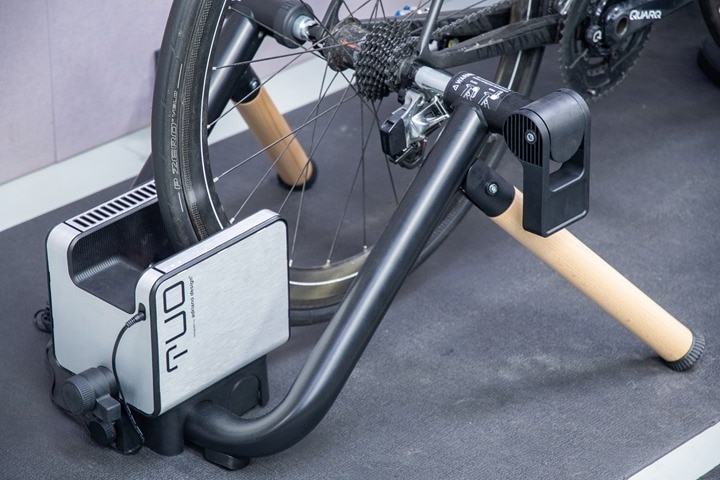
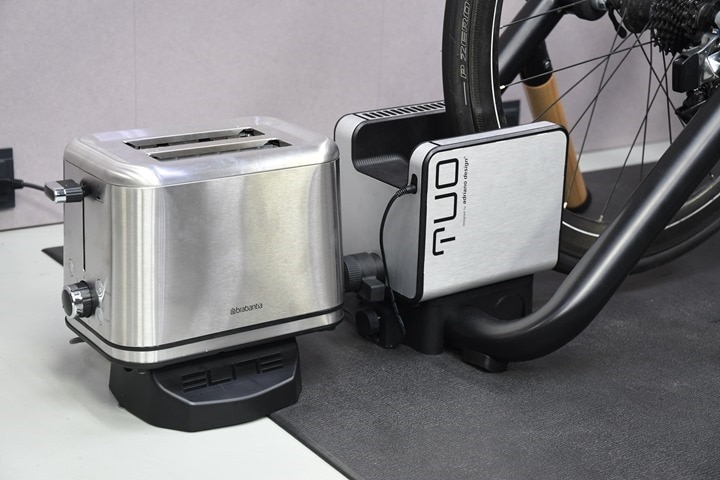
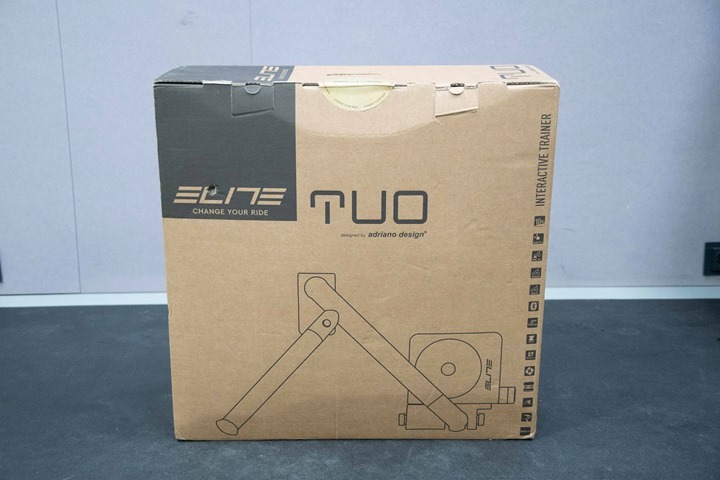
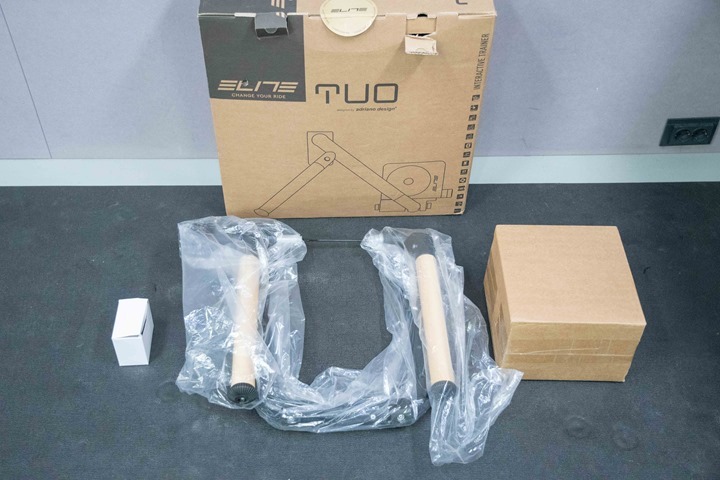
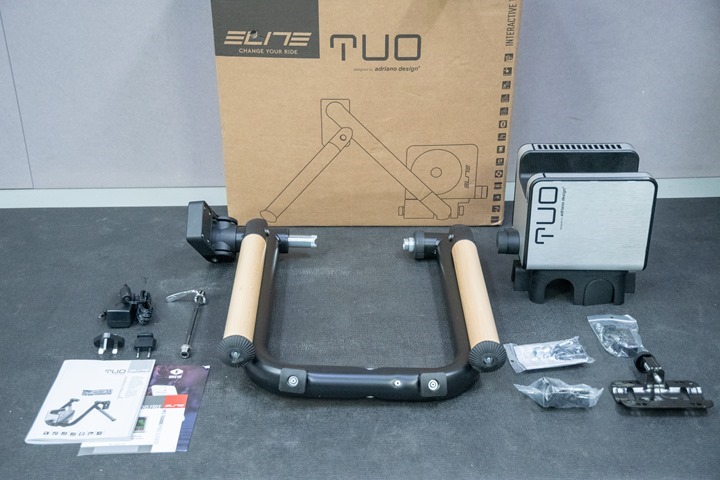
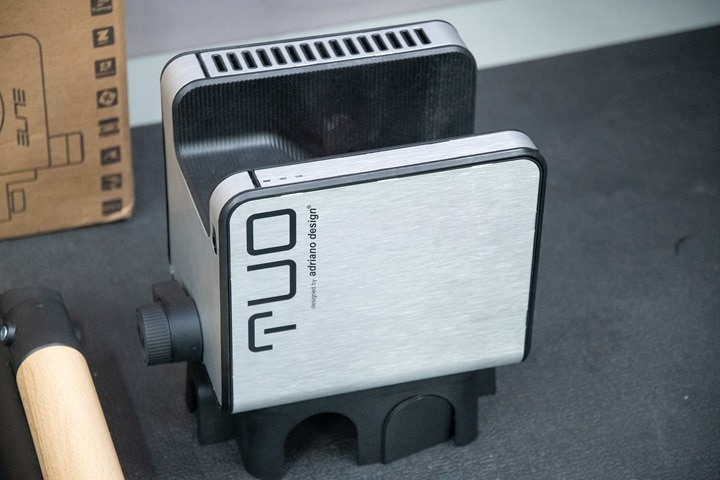
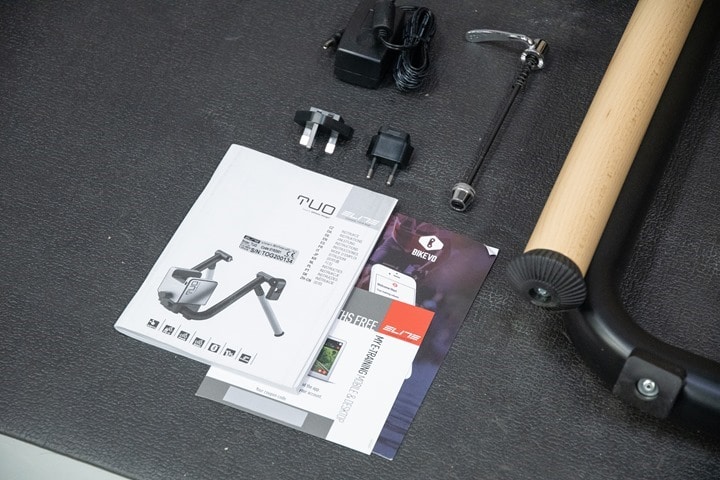
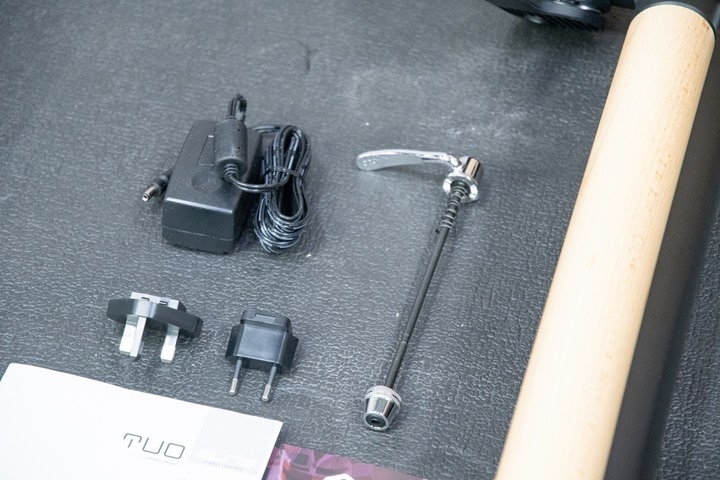
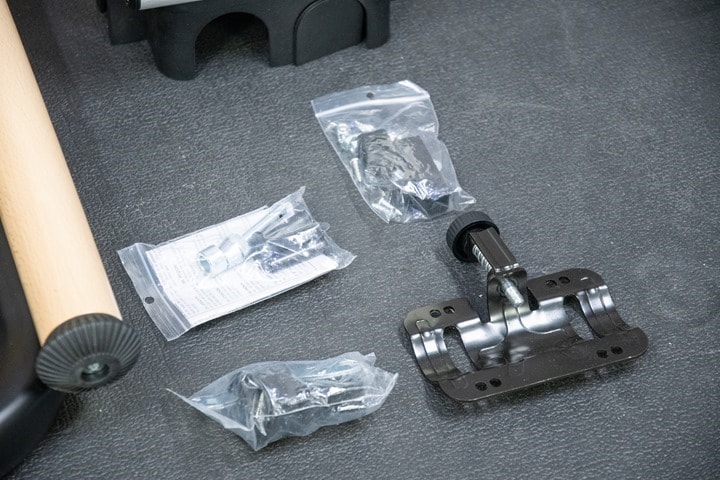
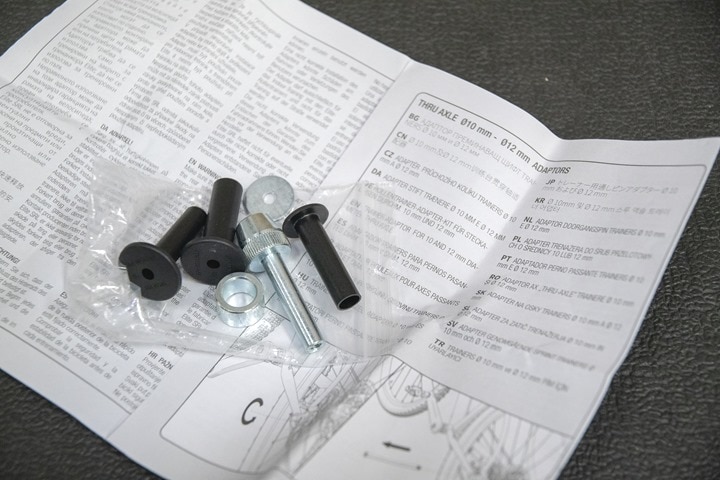
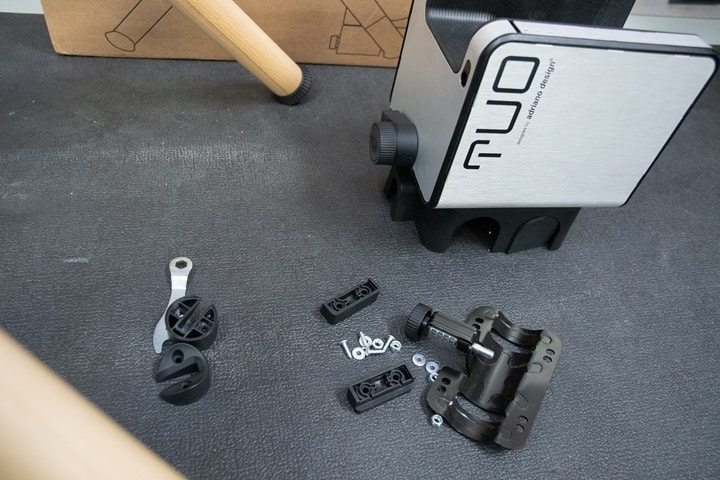
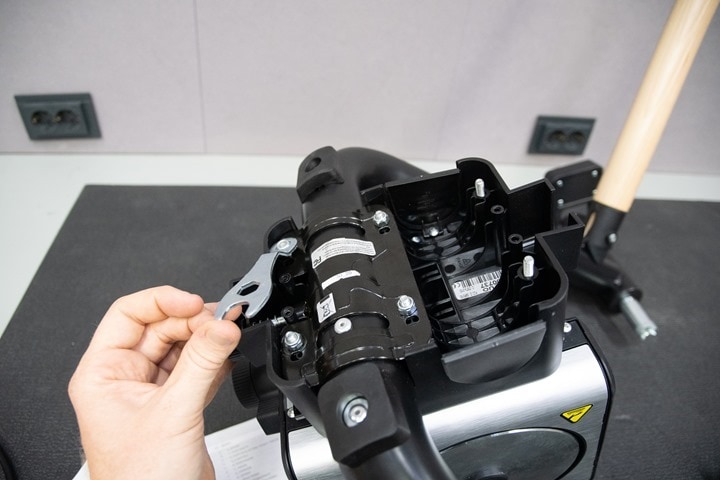
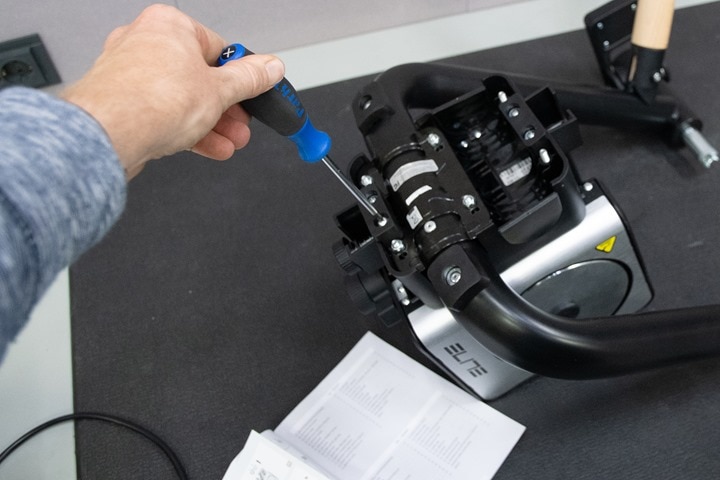

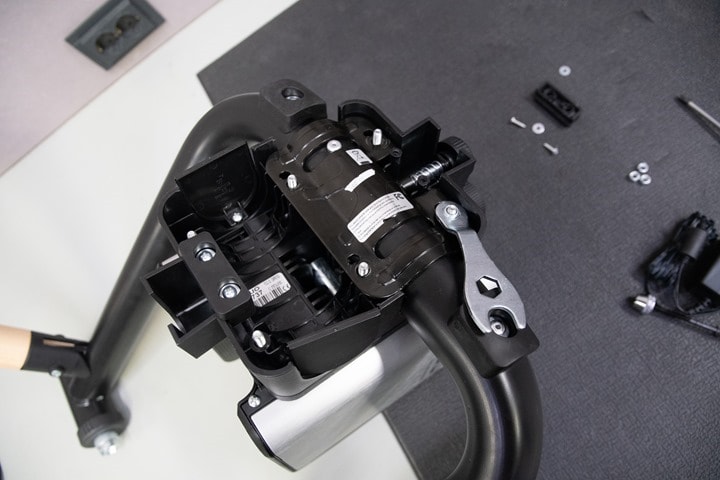
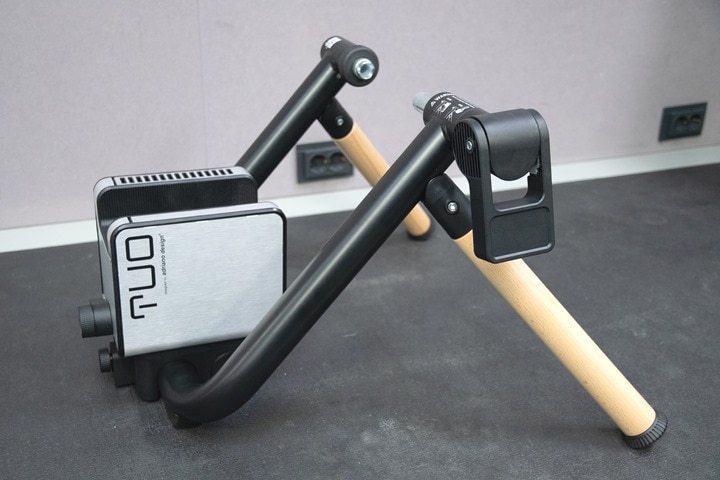
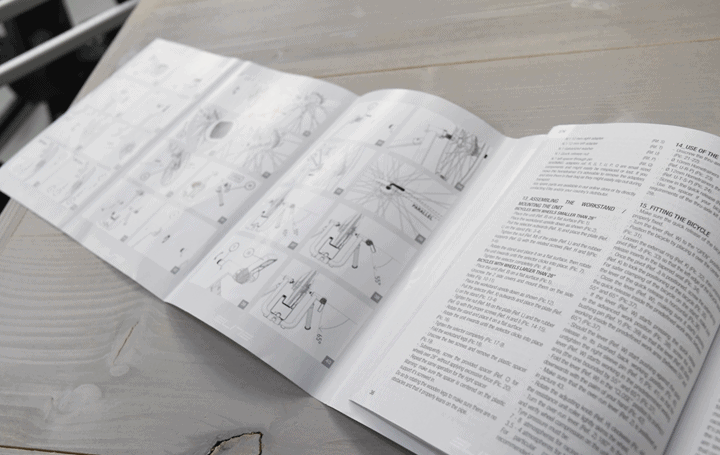
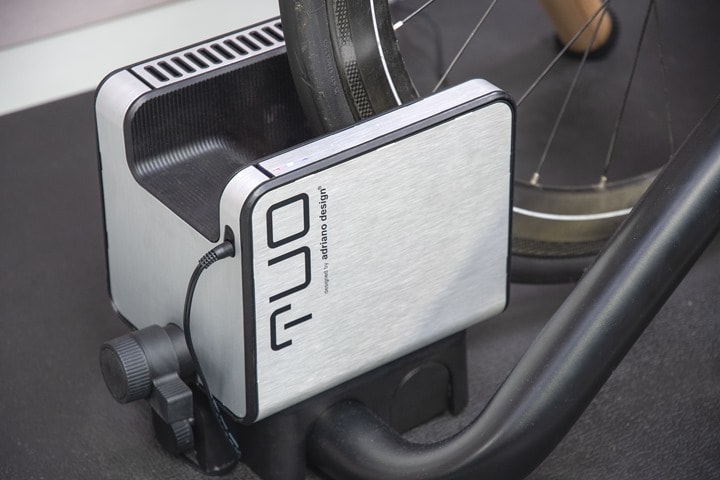
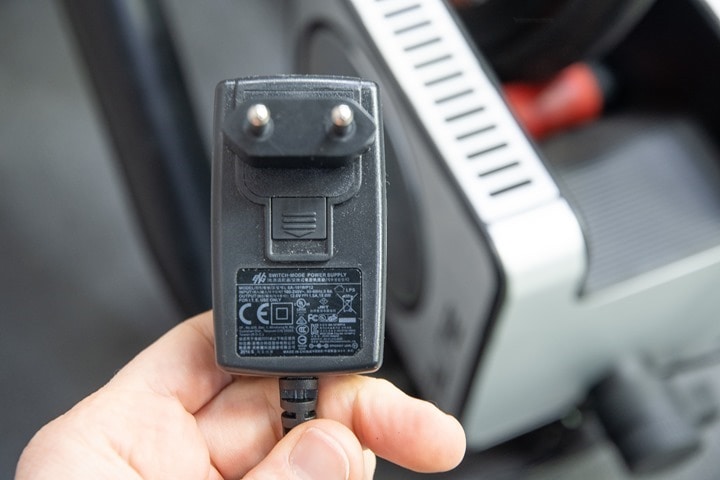
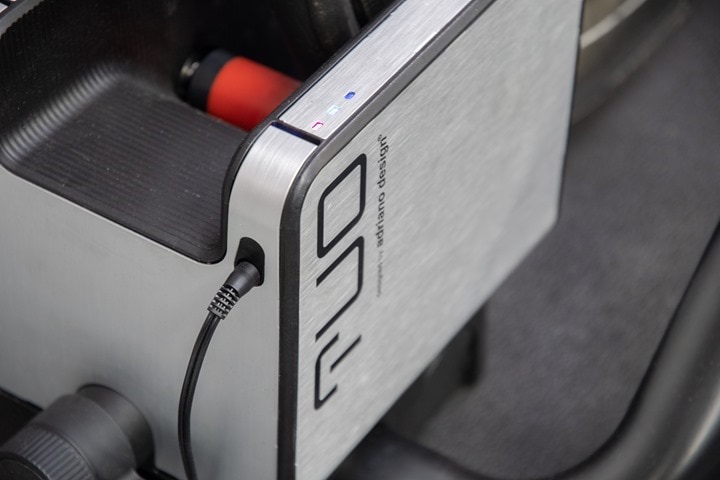
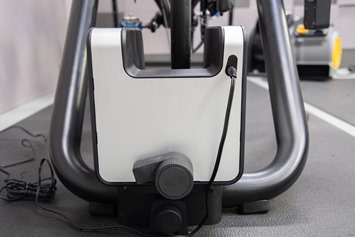
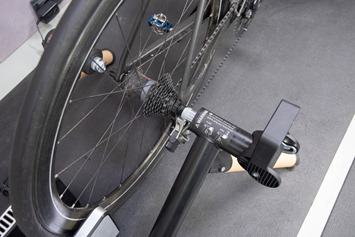
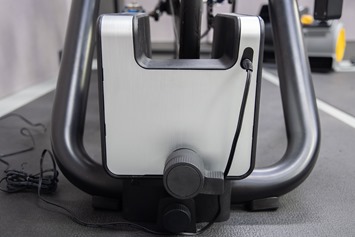

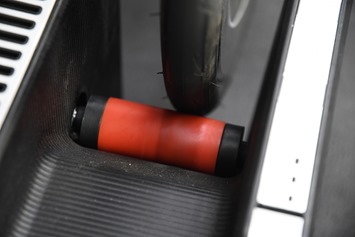
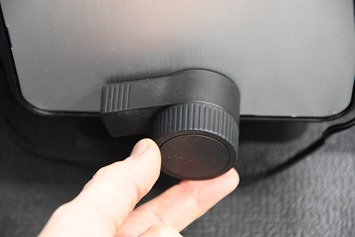
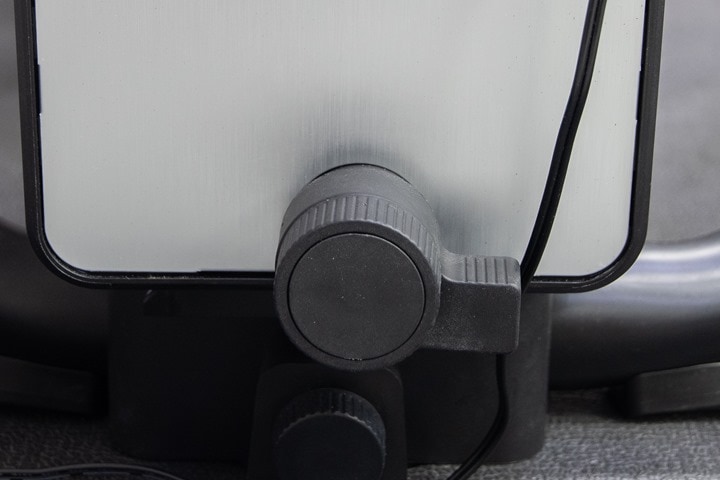
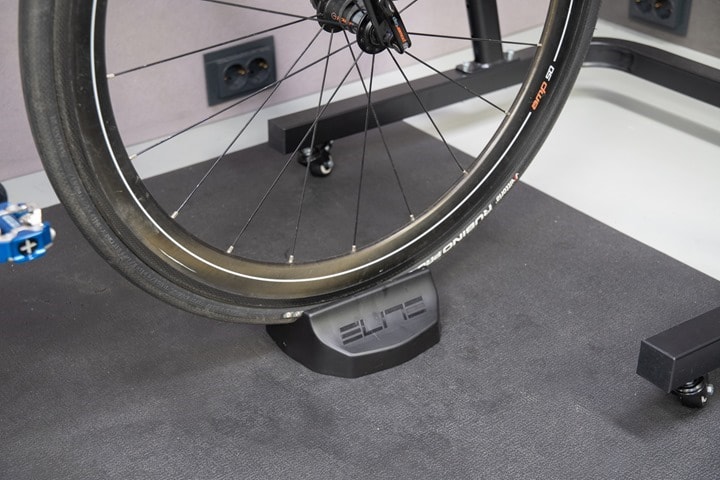
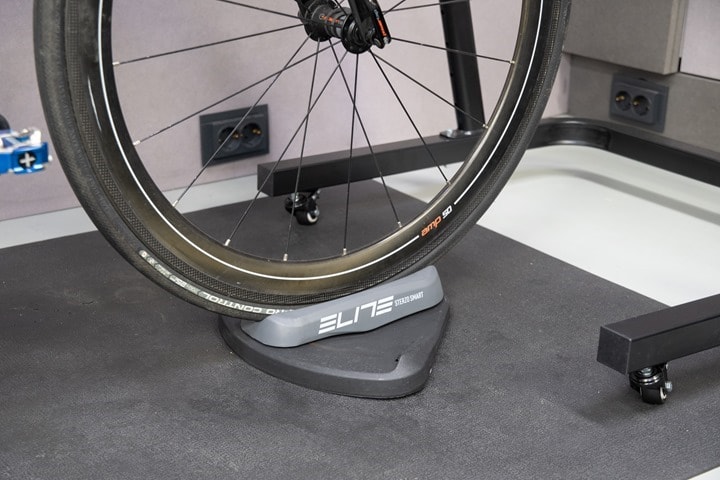
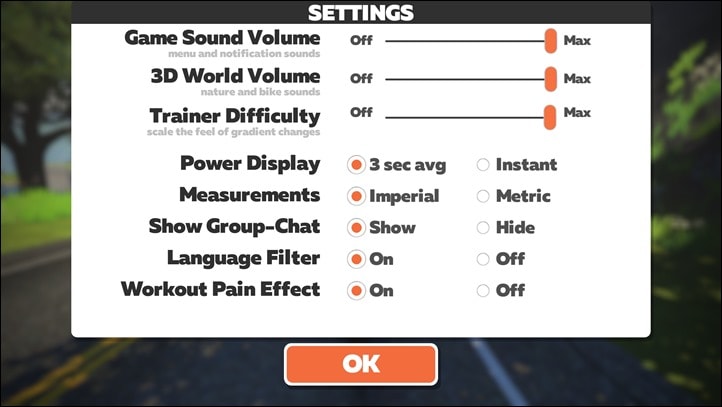
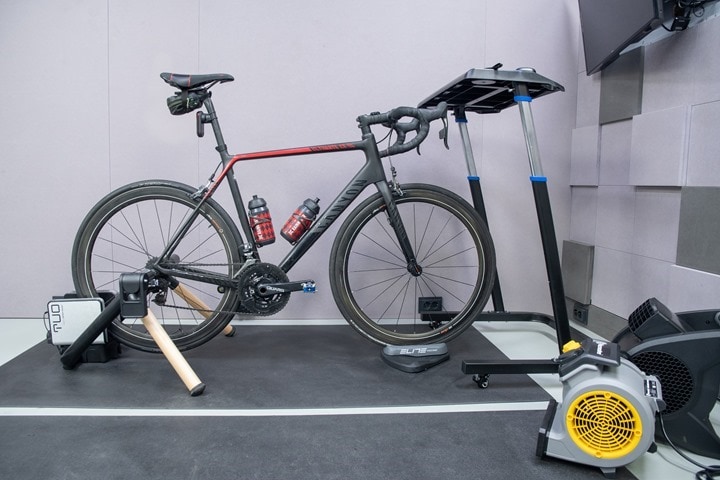
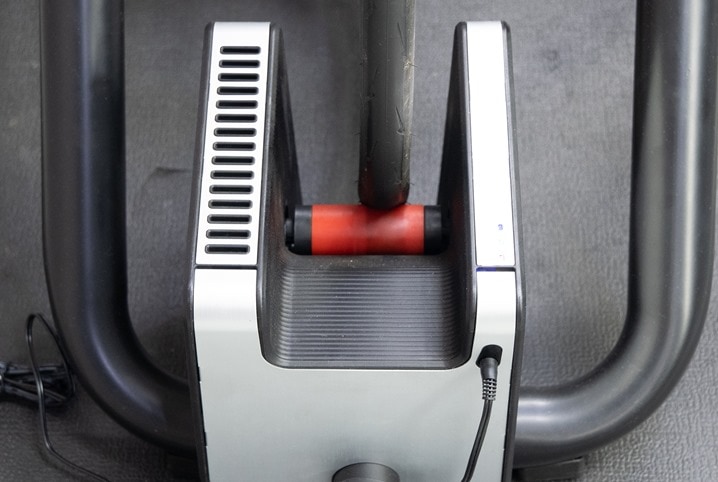

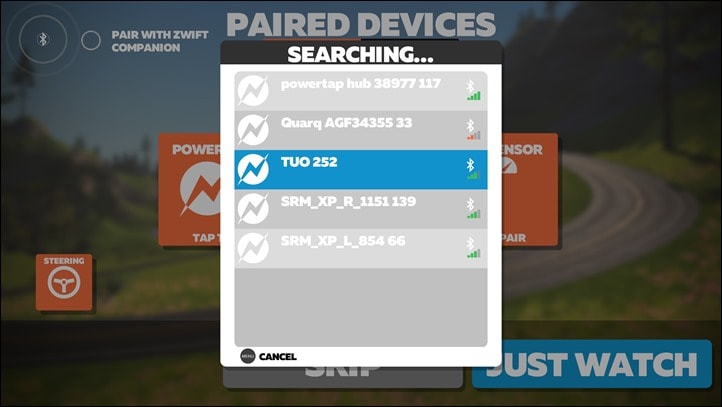
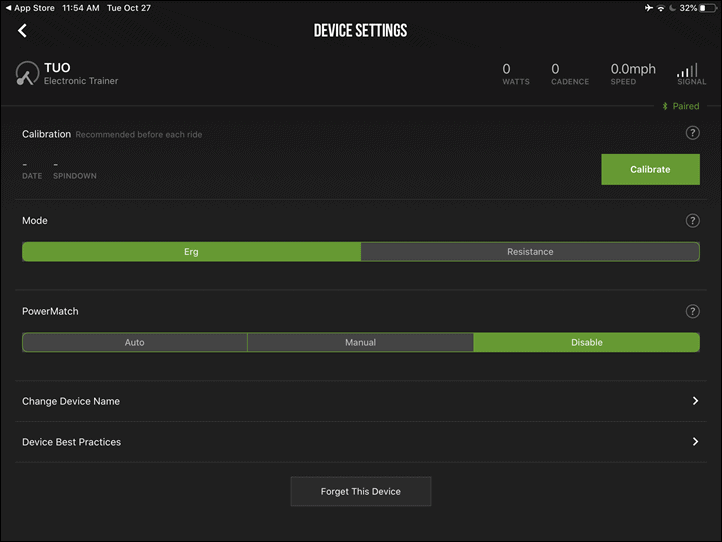
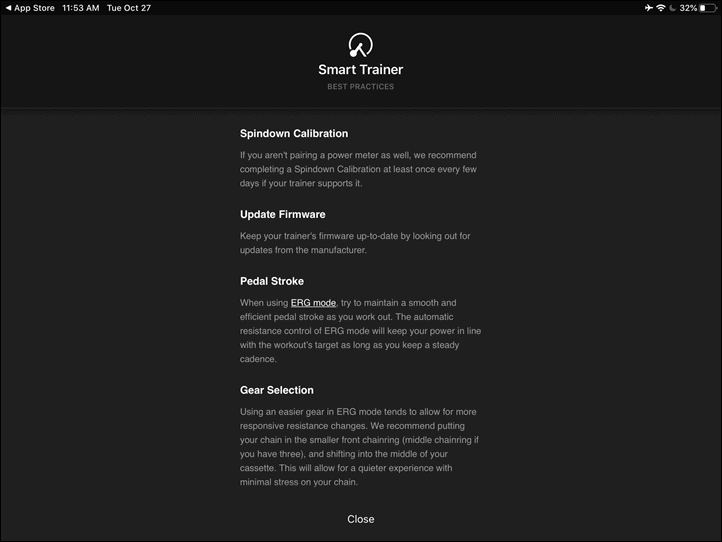
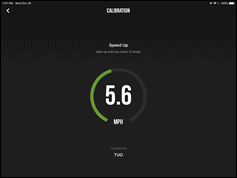
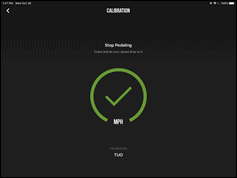
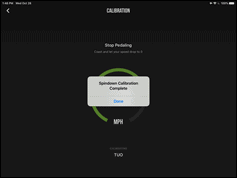
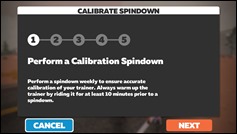
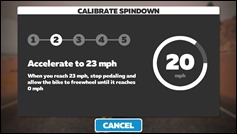
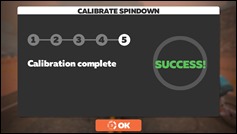
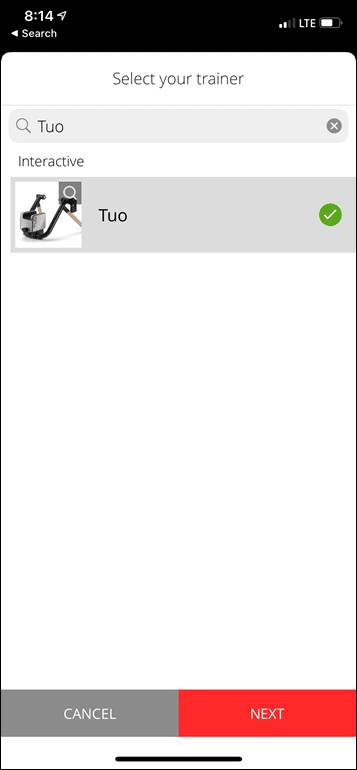
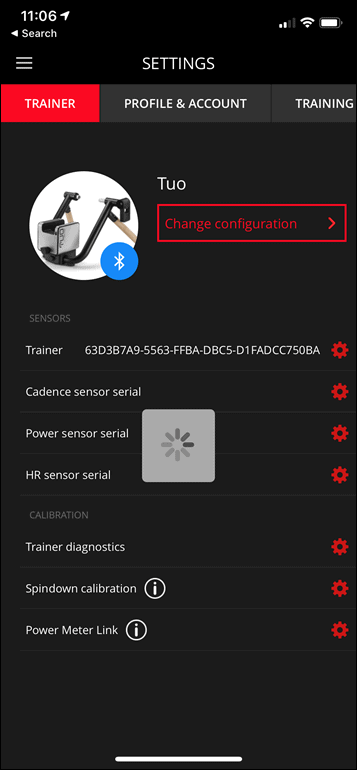
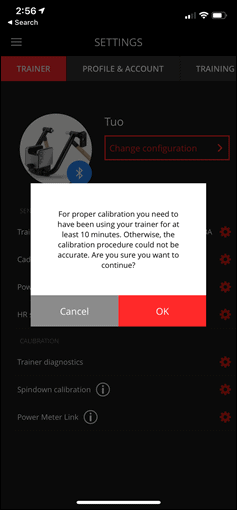
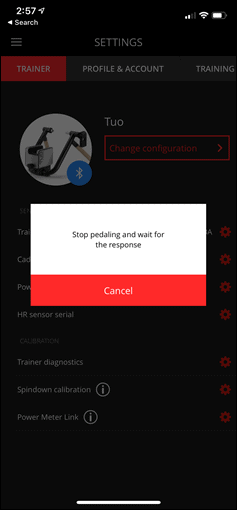
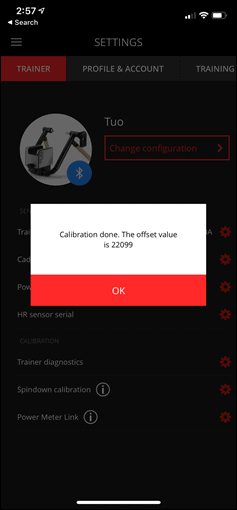
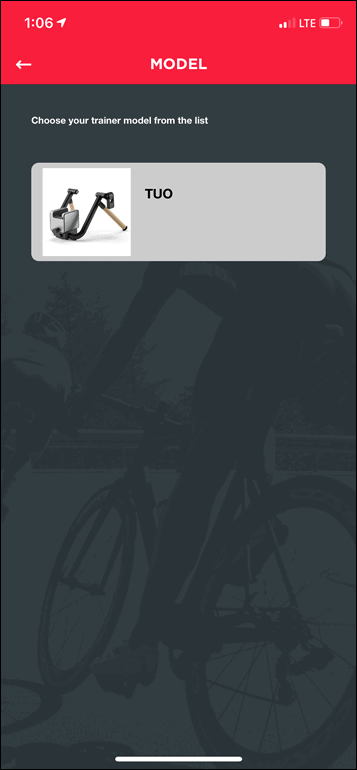
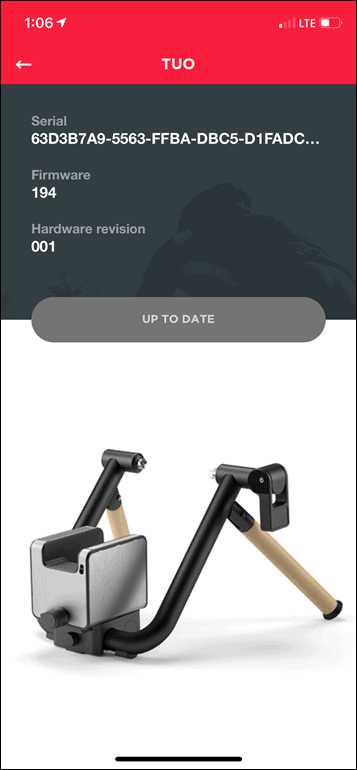
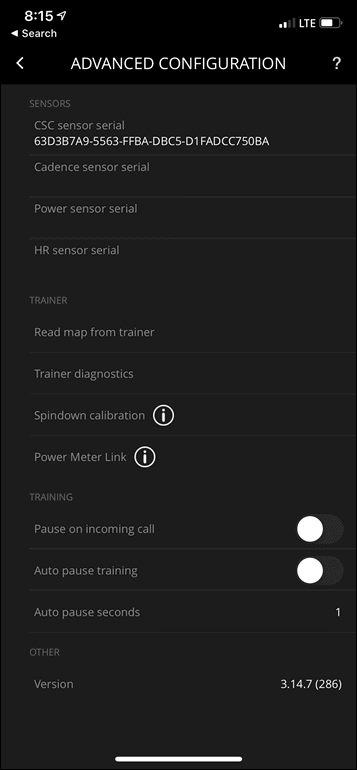
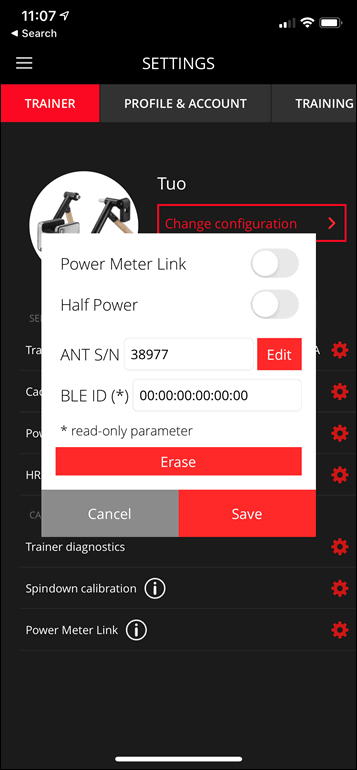

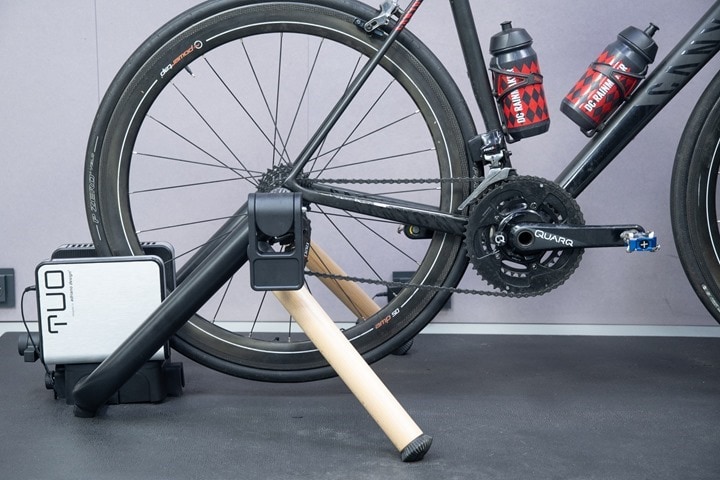














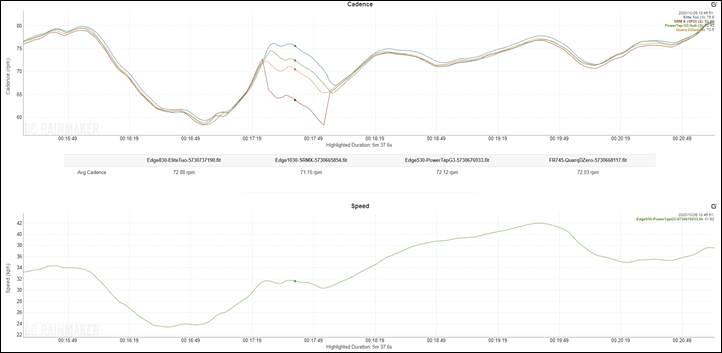





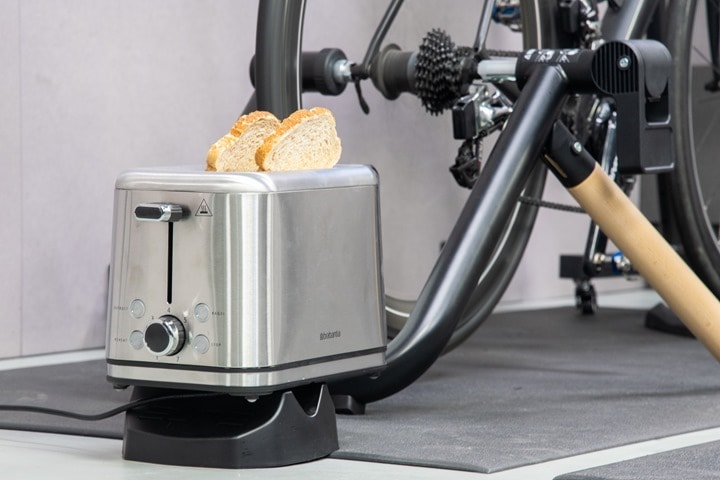
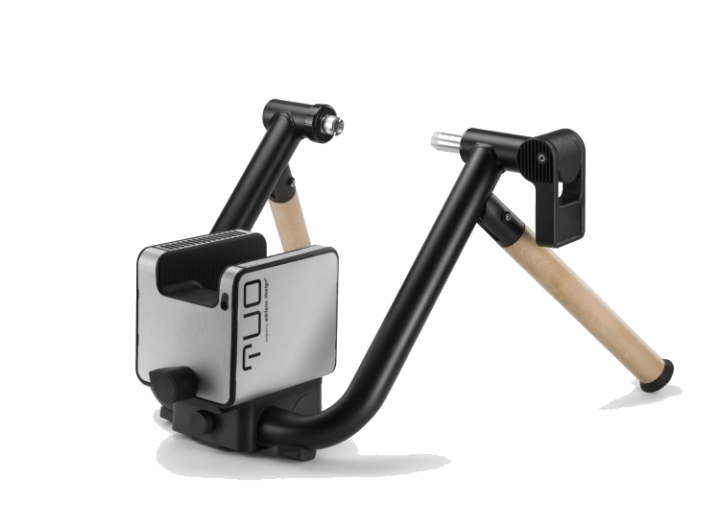
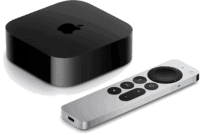
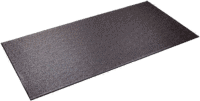


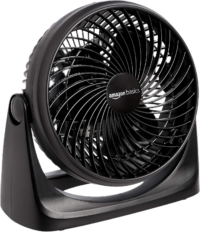

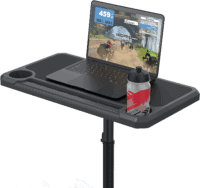
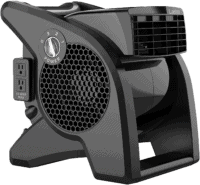
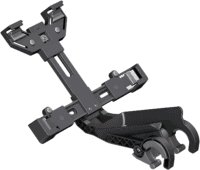





















I’m toast after reading that!
A toast to this rad toaster review!
Using a smart trainer controlled by feedback from a PM hasn’t worked well for me either. There always seems to be lag or overshooting or something. What could work well is a smart trainer that uses its internal calibration to control resistance in the normal way but updates its calibration curve over time matching it to the PM. IDK if any do this already.
Do you think this is the best trainer at this price point, or just the best trainer available at this price point?
I think it’s definitely one of the best. I need to pull out the KICKR SNAP and see how the road feel compares, as well as accuracy and responsiveness.
Hi, did you do this exercise and is there any additional feedbask bout the road feel? Considering flywheel weight, KICKR SNAP should win this battle…
I like to ride Zwift Everything Bagel, is there a Bagel setting?
Hmm…. 110psi? Aren’t they limiting the market segment with that spec?
Anything over 85psi on my a Grail wheelset would be asking for trouble. Kapow!
So this or a low end direct drive trainer?
I just ordered one. The less expensive DD I could find was still over $200 more than this one.
Seen the TACX FLUX S TURBO Trainer for £499 and not sure if the extra is worth it for not having to mess about with tyre pressures etc.
If you can get it at that price, i would go for it.
That one is $750 on amazon.
Right you are then ??
Had exactly the same setup issues, got there in the end though!
Definitely enjoying the road feel.
Seem to be having a LOT of dropouts on ANT+ but not on BT) though compared to the Tacx Vortex it is replacing. Did you see anything similar?
No, I’ve almost been entirely on BLE. I think one ride on ANT+.
I saw a few dropouts, but on those days it was all devices in/near the bike. So my guess was just something transient WiFi-wise.
From your buying guide it seems that your suggested wheel on trainer would be the Kickr Snap if you’re spending $499. Feel the same after testing the Tuo?
I’m gonna break out the KICKR SNAP tomorrow and give it a quick ride to see how road feel and such feels comparatively. It’s been a while.
Ray, did you refresh your feelings about Kickr Snap?
I want to buy a trainer and both are under my interests.
Btw, what about noise levels? Which one makes less noise?
Hi,
I would love to know your thoughts on which one you would buy between the Kicker Snap and the Tuo as my budget does not stretch to a smart direct trainer so these two look like good options. I also don’t have a cadence sensor so this could be a benefit over the Snap.
We gonna see that comparison with the Kickr Snap, Ray? Or was it just another empty promise?
Seriously dude? Don’t be a dick. Also, especially don’t be a dick when you’re wrong.
Read where I posted on it last week: link to dcrainmaker.com
I just measured my road bike wheel (Zipp 202) with a 25mm tire (Vittoria Rubino Pro) mounted. It is under 27 inches. In actuality, what we call a 700C setup is a 622 millimeter wheel diameter. Even with a 32 mm tire, the setup still isn’t up to 28 inches.
Makes you wonder why the English (and Italian, and French, and German) Instructions talk about inches, since everything about the wheels and tires is metric, and the Elite company is Italian.
For about 50 EUR more I could get direct drive trainers:
Tax Flux S
Elite Turno Smart
Is it worth paying extra money for one of those?
Well, I suspect that in a couple of months the price will drop to 400€ or even less making it a more appealing value proposition.
But anyway wheel on trainers do still have a place for all those folks who don’t have only the “Standard” 700c 11 speed bike…small wheels, older bikes and so on.
At home I have more than one trainer and while the my Neo is perfect for road bikes, I use an Elite fluid wheel on for everything else (my children’s bike, older 10speed bike, etc)
Well, I suspect that in a couple of months the price will drop to 400€ or even less making it a more appealing value proposition.
But anyway wheel on trainers do still have a place for all those folks who don’t have only the “Standard” 700c 11 speed bike…small wheels, older bikes and so on.
At home I have more than one trainer and while the my Neo is perfect for road bikes, I use an Elite fluid wheel on for everything else (my children’s bike, older 10speed bike, etc)
Every time I see this thing I only see the “toaster” and think WOW – that is REALLY REALLY REALLY small.
Of course a few seconds later the rest of the brain wakes up and I see the other part of the trainer. :)
Also Ray, I expected a nice graph with toaster ejection and warmup speeds – is that still coming? I’ve heard reports that toaster timing is very variable and that there may be some L/R inbalance!
Interesting review. I have had a lot of issues trying to get the toaster calibrated in, particularly with my wife who hasn’t ridden a trainer/erg mode before. I think for the more casual buyer, who won’t necessarily be following the blog, it isn’t winning many points for ease of use. Compared to my old tacx vortex, it definitely seems more fiddly.
One other point, I had to update my firmware, as my boxed trainer was one version older than the update available on Upgrado. Might be worth advising people check it when installing the device. Side note: it’s quite annoying to not have a changelist attached to these firmware updates, to understand whether it’s an essential update or not.
Hello! I am toasted trying to calibrate this thing, were you able to get the toaster calibrated? Any tips? Thank you.
Hi Tito,
On my Tuo, I made sure I had the latest firmware update by using the Upgrado app. I did ride the Tuo before I did anything and the firmware update made the biggest improvement on response to gradient changes.
I then used the Elite myETraining app to calibrate it:-
1. Open the app and select ‘Settings’ at the bottom (in red)
2. Select ‘Configuration’
3. Select the Tuo by either using the QR code on the trainer or manually select it in the list.
4. A ‘Select sensor type’ window pops up and select ‘Bluetooth’
5. The next screen appears saying ‘Please start pedalling’ with a spinner below it with ‘Update in progress…’ below that.
6. Then just pedalled for 20 secs, if that
7. Then click ‘NEXT’ at the bottom in red
8. A ‘Do you have additional sensors?’ window pops up. I do have an additional cadence sensor but didn’t select anything so just click ‘OK’.
9. The next screens are for your HR strap, if you have one. Either click ‘Skip’ or select whatever you have and click ‘Finish’.
10. It eventually says ‘Well done’ the application has been set up successfully!’.
My Tuo is working great and is the best trainer I’ve ever used and I’ve used/owned a few direct drive trainers the last 5 years.
I’ve just bought a Tacx Neo 2T as well. I am going to try it side by side with my Tuo and see what the difference is. I’ve got a feeling I might be sending the Neo back!
Thank you Kevin for the detail, it was very helpful. Unfortunately, repeated steps resulted in failed calibration for my unit! It was a workout session of itself trying to calibrate on Zwift, TR and the myEtraining App. It appears to be a common issue for a lot of people out there. Hopefully it’s a software fix they can roll out soon.
Hi Tito,
It seemed to work for mine OK but it was the firmware update that made the biggest difference. It rides really good and performs better than my old Elite Novo which was a pig to calibrate. I entered the P1,P2, P3 values myself for the Novo on the myETraining app, which you can for that trainer.
Is it not feeling right at all or do you just think it’s not right until it’s been calibrated?
I see what you did there in that photo describing “Once you’re done it’ll look like this”. Has nobody else spied this yet?
What was the level of hand strength / palm pressure required for attaching the bike / wheel to the trainer? More, or less than what it takes for a skewer?
I’ve not (yet) bought my wife a smart trainer because she doesn’t do well flipping bike skewers. (Combination of arthritis plus not liking the pointy lever pressure on soft tissue.) So wheel-off trainers have put me … off … for her due to the need to do skewer stuff. The idea that she would repeatedly her wheel off for training only to have to put it on again if weather permits outside riding is a non-starter for her. So she uses a 1Up USA dumb trainer. Nice product, but not smart.
But the big fat flipper for attachment on this Tuo trainer makes me think this toaster might be good for her. So, can you comment just a smidgen more about the wheel attachment flipper lever strength / difficulty?
Hi Jay!
The lever on the back takes more hand-strength than the main bike holding lever.
I’d suspect the bigger bike holding lever would be no problem. The little lever does take some strength, but what I’d say is less than trying to (properly) close a quick release skewer. Also, once you reach the half-way point it kinda flops the rest of the way over with momentum.
Don’t forget that there is no need to buy a rear sprocket, which saves money.
Does it have a defrost function then?
Out of curiosity, what is your Zwift setup?
PC? Apple TV? Apple TV 4K? Bluetooth? Ant+? Resolution?
I tried to use the search functionality, but was unsuccessful…
At the office/studio/cave I primarily use Apple TV 4K via Bluetooth Smart. About the only time I’m not using that setup is if I’m using a pre-release Zwift Mac or PC build for something just before it announces.
At home I usually use either an iPad or my Windows PC. Though, I’m gonna cobble together an older small TV for the garage/shed and stick an Apple TV on it. I might just wait another few weeks in case Apple decides to announce a new version at their November event. Probably not, but I’m not in a big rush.
Good intel on November event!
I am in the process of adding a TV to my setup (instead of laptop) and was unsure between Apple TV 4K and a second hand gaming desktop wtih a decent graphics card.
So basically probably the best wheel on trainer money can buy at the moment, if I’m reading you right. Plenty of reasons why some would want wheel on over direct drive. I for instance have an 11 speed, a 10 speed, my wife’s 9 speed triple and also my 6 yr zwifts using his 20″ mountain bike. Swapping between these with a direct drive would be a real pain.
Great review! Does this Elite trainer also work with 120mm track bike hubs (if you put nuts on top of the threads)?
Did the Girl get her toaster back?
No mention of using a trainer tyre to reduce noise?
Installation looks similar to other wheel on trainers.
Any reason the wheel is not in the centre of the roller?
To be fair, I literally purchased this toaster a year ago, just for this review. Around then though, The Girl decided she wanted a toaster capable of toasting a bagel. Our current toaster doesn’t have wide enough berth for it.
As for trainer tire, I didn’t – mostly because my past testing hasn’t found trainer tires any more quiet. In fact, the opposite in some cases. What a trainer tire does do though is reduce the tiny little black bits of rubber from coming off your tire over a long winter. Though, it honestly depends on the tire. Some tires put out a lot, and some less so. If you’re in a garage, you’ll probably never notice. Whereas if you’re on/near white carpets, you’ll definitely notice. Historically the way I look at it was that I’d just use that tire for the winter season indoors, and then get new ones each spring, which is what many people would do anyway. These days I’m almost exclusively on direct drive trainers though.
As for not being in the center – mostly cause I just happened to get it on there, and was fiddling a bunch one day and simply had to start my ride or I was gonna be late. No impact to accuracy (as seen), or ride feel.
I’ve got the Tuo and had if for a couple of weeks. I was using Continental Grand Prix 4 season 28mm tires already on my bike and they were shredding quite a lot of rubber. I bought the Elite Coperton Indoor Trainer Tire and was genuinely surprised at the noise reduction. I’d recommend trying as it really does work and brings everything down to a low hum.
Great review Ray. One question. You emphasize that all wheel-on trainers are loud. Does that include wheel-on fluid trainers, or are these dead to you now?
Cubo Power Fluid is silent, really but there is no intertia so a few seconds after you stop pedaling the wheel stops and you have to put sometimes a lot of efforts to start again as the resistance depends on wheel speed only. So if you are on 52×14 on Zwift for instance and want to start spinning again you have to put a lot more work than on trainer with the flywheel. Running on Power Fluid is like instant uphill .
Thanks for your review.
I’ve been using the trainer for a week now. And I like it, but my power output is way off. Even after calibrating it with zwift, elite app and my garmin edge 830. Especially when steeps are simulated the output is basically off by 250 watts. I can double check since my father is using a power meter in his sworks. I did exactly as u told, updated the firmware, tried it with both Android and iOs. I also have no idea what the offset values mean after the calibration. Was the speed value on your zwift calibration correct? I had to accelerate to 55 kph in order to complete the process.
I’ve seen that there are numerous people having the same problem. I’m beginning to wonder if my hardware is damaged. Although the cadence is spot on. Running out of options…
Well other than that, it’s a great trainer. But useless to me since I don’t have a power meter. I ordered a Suito now, hopefully this will work better.
I bought the Tuo and have the same problem as you. At high speeds power isn’t too far off but in hills 500W on power2max power meter becomes 800W on the trainer. I’m wondering if the TUO didn’t automatically enable power link in DCR’s review (especially in the sim mode plots) because I find it hard to believe it is that accurate. I found that even if you disable it in the app the unit sometimes connects to a PM. You have to specify a false ANT id to disable power link completely. Or there is a problem with my unit…
It’s a shame because in terms of feel this trainer is great.
Unfortunately I’m in the same boat, with power readings that are way off when climbing. Did you find a solution, or just return or get another trainer?
If you have a power meter, you can configure the Tuo to get power from the meter rather than estimating it. Ray’s review briefly mentions the feature, and he notes that it worked fine for him. I agree with Ray that ideally the trainer would report accurate power data. In my case, the Tuo works okay, but not great. So I enabled power matching. I have had no problems with it, and now the power metrics that (in my case) FulGaz gets from the Tuo are a perfect match for the power metrics that my ELEMNT Bolt records directly from my power meter.
Hi Ray… how much better is the Saris H3 compared to the Tuo (with road feel) on something rolling like Titans Grove?
I’ve had my Tuo for about a week and do like it. It’s better everywhere on Zwift and really good on Titans Grove! But I was looking at getting a Saris H3 even though it costs twice as much as the Tuo.
I’ve had an Elite Novo wheel-on smart trainer for the last 18 months and it’s very similar to the Tuo in all ways… but the Tuo is much better! I saw the Tuo last year and read your comments about the ‘road feel’ and thought about getting a Tuo back then.
In the past I’ve owned a Bkool Pro (1st trainer) and a Kickr2 (6 months). I’ve tested a Drivo 1, Hammer 1 and the original Flux but sent them back as they didn’t ‘wow’ me. I’ve never tried one but I am also considering getting a Tacx Neo 2T but they are even more expensive!
Hello, thank you very much for this extensive test. I am currently thinking about buying a Wheel on Trainer. Before I read this test I was thinking about the Tacx Flow Smart Trainer. Which trainer would you choose, the Tacx or the Elite Tuo?
Thank you very much for your input.
If it’s your first trainer get the Elite Tuo.
My Tuo is very good and the response time to gradient changes is the best I’ve ever had.
I was thinking of a direct drive trainer but will it be much better? I have owned/tested many direct drive trainers (over 3 years ago though) and the Tuo is the best. I have the option to buy a Saris H3 or Tacx Neo but will they be that much better?
I own an older Elite.
I really like the red rubberised roller. The previous owner (friend of mine) uses it without a trainer tyre and he said his GP4k doesn’t have any weird wear patterns on it.
Some of the black did transfer over, and that’s really the worst of it.
I now use it with a trainer tyre.
“I’m not a big fan of power meter matching/linking type technology from any company, as I often find it does weird things around delays in power.”
Ray, I’m currently using an Elite Rampa (older wheel on, I’m happy thus no reason to change) and I’m considering buying a PM for my future races.
While Sufferfest doesn’t offer it, some other softwares such as Zwift etc does. Do you share the same opinion on this function when its on a trainer software?
Your 2016 trainer app guide has it (link to dcrainmaker.com) if you search ‘ Can use seperate power meter to control trainer’ with a yes/no on the table.
Generally speaking it’s worse when implemented by a 3rd party app, than when implemented directly within the trainer, since in that case it has to loop out and back twice. Versus doing it on the trainer tends to shorten the loop since it connects directly to the power meter.
I note that you seem pretty impressed with the accuracy of the cadence reporting, however I’m struggling to get it to register over 60rpm. It typically reports 30 rpm whislt my garmin shows 70.
I’m guessing it senses cadence based on the power output – any suggestion for big/little ring when using ERG mode to make it more accurate?
Had the same issue with cadence.
A firmware update fixed that (Last week)
Thanks, FIrmware is updating now so fingers crossed.
Hi Ray, thanks for the review! Did you get a chance to compare road feel side by side with the Kickr SNAP 2017? You are in the unique position to try them side by side and let us know if there is a clear road feel winner or if they are about the same, and if they are significantly different feeling than a budget wheel-off trainer. Thanks!
Hi,
i’m thinking of the tuo or the wahoo kickr snap. which one would you recommend? Many thanks
Hi!
I calibrated exactly as you told, but within Zwift my power output is completely off. Sometimes 150 – 200 watts. Needless to say that makes the trainer obsolete, because it’s no fun when your ascending and your pushing out real 250 watts but the trainer says 550. Did I miss something? Anyone else has the same problem?
regards
It WOULD be no fun if you were pushing out 550 watts but the trainer/Zwift was only showing 250 watts. Is it making it too easy the way you state?
I used the Tuo past couple of days with my dads Bike. He has a powermeter installed. Now I have a very good feeling of what seems legit and what watt numbers are off.
I calibrated the Tuo with my IPad, using exactly the steps suggested above. When I’m zwifting, the power output on the flats is around 20 – 30 watts too hight, the moment I start to climb its off by 150 – 250 watts, depending how steep it is. I have the impression that the calibration only considers the flat parts and calculates completely wrong when I’m ascending. That’s really frustrating since it takes out the benefit of doing any mountains in zwift. I’m totally lost.
Christoph… you have updated to the latest firmware?
I haven’t got any power meters but the power figures I’m seeing on Zwift, FulGaz, Bkool and Rouvy are all very similar, so assume that’s what I’m putting out and the trainer is calibrated OK.
I’ve read somewhere Elite claim the tolerance for power figures is +/- 5%. which is pretty slack, but your figures seem way off those tolerances.
I’m not too bothered about exact power figures as long as they stay consistent and aren’t too low. If they are reading high, then that just lets your avatar go up the hills faster :-)
Kevin … thanks for your replies anyways!
I did update the Tuo, but didn’t really help in that regard. Somehow it seems I’m missing something or maybe I don’t and my unit is just broken. Guess I’m doing only flat courses until I’m getting a replacement or buy something differently.
Christoph… I’d return it and get a replacement or another trainer? My Tuo is great! Keep on reading…
I ordered and received a Tacx Neo 2T the other day. I’ve been thinking of getting a Neo since they first came out but just a bit pricey. I thought I’d give one a try and if it was a lot better than the Tuo, keep it. I was getting all excited about the Neo from all the reviews, etc, and when it arrived, it needed a firmware update so did all that.
I rode a route on Rouvy with the Tuo the day before and then rode the same route again using the Neo the next day. I liked the downhill effect when it keeps spinning when you stop pedalling but most trainers keep accelerating downhill anyway (apart from the Kickr Core) so not that big a deal.
But when going down an incline and I wanted to go faster & started pedalling, I did select an appropriate gear so I wasn’t spinning but the Neo didn’t like it and gave no drive at first, hesitated, and then just didn’t go much faster. The Tuo feels a lot better and does accelerate if you pedal hard enough.
Also, the response to gradient changes and the feel when you were rolling up another climb straight after a previous descent and you stood on the pedals to keep the momentum going just didn’t feel anywhere near as good as the Tuo.
The Neo costs 3 times as much as the Tuo but, to me, the Tuo is better! I could say more but I’ll leave it there ;-)
Forgot to say, the Neo was a lot harder up the steep climbs than the Tuo. A 9% climb felt like a 15% on the Neo! I know the Tuo only goes up to 10% incline simulation but we weren’t at it’s limit.
Anyway, the Neo is all boxed up and ready to return!
Hi Kevin/Christoph/Tito,
It’s not completely clear from the comments, but Kevin described configuration, not calibration. I feel Christoph’s/Tito’s pain…
New unit today. Installed the bits, configured and did a warm up of 10-20 minutes pre-calibration. Numbers looked OK. I spnet an age trying to do a spin down calibration. It failed multiple times, requiring multiple unplugandpluginagain to get things working. Finally got it go through the process and now the numbers were way off – cruising giving me a road speed of 90km/h. Repeated calibration (with loads of failures again) and no improvement.
I will be trying again tomorrow am, and if I have similar problems it’s going back.
Real shame, low noise, feels good. However I think they have serious problems with this unit. I’ll post tomorrow with outcome.
Sean… what I did was the ‘calibration’ process using the Elite myEtraining app. That’s the way I did it and the Tuo feels like the best trainer I’ve ever had and I’ve tried a few, the latest being the Neo 2T.
My ‘spin down’ calibration didn’t last long at all and really didn’t seem to do anything but it seems to have worked. My power AND speed are ‘real’ on Zwift, FulGaz, Rouvy, Bkool and the Tacx Desktop app.
Maybe do it exactly as I describe and it might work? Or maybe the way you done it needs the unit setting to the defaults and re-doing.
I’m not an expert on calibrating trainers it’s just what worked for me.
Thanks Kevin, your earlier post describes what happens after hitting the configure option in settings. I did the same and numbers looked ok (but I don’t have a power meter to compare). My problems started after hitting the calibrate option in the settings menu….a different process….did you do that too, and get it working ok? It seems there’s a few people who have tried and failed.
I might be able to borrow a meter tomorrow which will be interesting, and I can see how close the numbers are after the configuration option, and then after calibration.
Fingers crossed things work better tomorrow.
S
Hi Sean…I finally got it calibrated after several days! My last go I was a little annoyed and just did a sprint past the recommended 33.9 km/h and a window popped up and said to stop. Wala, the whole time I was trying to keep it the recommended speed. Now every time I go past 33.9 km/h it calibrates.
In the configuration option, connect your trainer and skip connecting any sensors and go straight to Calibration.
Thanks for all the help Kevin!
Hi Sean… you were right… I was calibrating but went through the configuration route which did it for me. Sorry for the confusion!
I used ‘Trainer calibration’ when I got an Elite Novo in 2019 and it just seemed to go on forever and I couldn’t be bothered so went the config route.
The Elite Novo smart wheelon trainer is like the older version of the Tuo… link to halfords.com
The calibration process was just as bad and I actually calibrated it manually and entered the P1, P2 and P3 values in myself which you could do in the myEliteTraining app. I did like this trainer as it only simulated up to 6% on inclines which made going up to the Radio Tower on Watopia a lot more fun!
Watch this video which explains how the Elite Calibration process works. It’s over 3 years old but still relevant and interesting… link to youtube.com
Guys… keep me updated on how the Tuo performs. It’s better than the Tacx Neo I reckon.
Hi guys,
Thanks Kevin. What would be interesting (well, to me anyway) is how accurate your power readings are after going through the configuration steps. When I did the same I didn’t do a full spin-down as you do when selecting calibration. I wonder what difference that makes.
I’ll check out the videos before saddling up today.
Tito – thanks, I did some efforts at 35+ with varying results. I’ll give it another go.
S
Just entering this discussion mid-way through, but when you did the warm-up calibration process, did you remember to re-do the wheel-on roller as part of that? Just as a quick recap, here’s my steps that work super well for me:
1) Pump up your tire to 110PSI (7.5 bar)
2) Do a 10-15 minute warmup on the trainer
3) Get off bike, and unlock the Tuo lever (so, it’ll slide the unit away from your tire)
4) Now, adjust the upper rear knob so that the tire just *BARELY* touches the roller
5) Now close the lever, so it presses on nice and tight
6) Do a calibration roll-down.
7) You’re done.
Sean… I haven’t got or ever had any power measuring device other than a smart trainer. What are you using?
I’ve been cycling for years and do prefer mtbing rather than road cycling and only use/prefer SPD pedals and I haven’t seen many SPD pedals that have a power meter.
Cranksets/crank arms are another option but even more expensive. It would be nice to know what the watts are but I’ll have to check my bank balance ;-)
Nothing at present. Upper limb injury forces a return to cycling a few years since I rode a lot. Looking forward to a winter of training so hitting the tarmac in the new year isn’t quite so painful.
Hi Ray… I didn’t bother with the calibration or firmware update when I first used the Tuo as I wanted to see what it was like straight out of the box. So when I did come to calibrate it it had been used for about an hour and everything was warm and bedded in.
With my old Elite Novo/Quobo I usually ran tyre pressure at around 90psi. When I watched your video saying have it at 110psi I did ‘ride’ the Tuo but didn’t calibrate it or compare any power figures are anything and it felt pretty much the same. To be honest, it feels that good and responds that well I don’t want to try to fix something that isn’t broke ;-)
So, calibration appeared to work first time today. And yes, all done as described above on both days.
However, after completing calibration I went into the free ride bit on the app to check numbers and….nothing. No data being received says app despite big blue light on toaster.
Argh!
Turneditonandoffagain. Working.
So, did the calibration save or not? It looks OK but I don’t have a meter to compare…
S
Calibration is saved if the unit confirms a number back to you.
As for not getting numbers – that almost sounds like another app is ‘stealing’ the data connection, and since the Elite Tuo only supports a single BLE connection, once one app/device steals it, you’re outta luck.
However, ANT+ does keep broadcasting no matter the number of devices, so if you’re using that, then my comment is null.
Ray… I did re-do the wheelon contact and always do. I usually have it touching and then, maybe, a 1/4 turn more. The adjustment knob thread is a lot finer than the old Novo/Quobo and takes a lot of turning for when the wife wants to put her 26″ mtb on it.
I also release the lever when finished as it can leave a bit of a bump in the tyre but soon goes away.
My ‘calibration’ never gives anything back so isn’t being done. So mine must be un-calibrated and could be better… or worse!
I’m going to re-calibrate my Tuo again later and see if I can calibrate it the correct way. I’ve always used Ant+ as previous Bluetooth readings have been a bit erratic but the Tuo readings seem very good so I’ve been using BT all the time.
Hi guys!
So I read a lot of posts, tried various ways, calibrated numerous times and in the end I still have the same problem. Calibration works for me, although the numbers the Tuo spits out afterwards are always completely different – riddles me. Anyways, the watt output when going a simulated UPHILL part are off by 100 – 200 watts. On the flats I’d say they’re sometimes off and sometimes pretty close. It’s really frustratring, since I really dig the Tuo. I had a blast when I was using it with my dads bike, which has a powermeter installed. Simulation of the gradients works perfect, the feeling is superb and the noise level is also acceptable. But with those watt numbers being totally off, it takes out the fun of zwifting for me. And that’s a no-go, since that’s the reason why I spent a fortune for indoor training in the first place.
@Sean keep a very close eye on your watt numbers while going uphill.
Thanks Christoph,
Sadly I have no power meter to compare but hope to borrow one.
So post calibration I did one of the video rides in the elite app. It felt ok though the resistance on the flat was perhaps a little high, maybe related to pushing the roller in a bit further to ensure good contact. So, I redid it and again into a cycle of errors, turneditonandoffagain, reboot app etc etc.
There are other people in the household who might use this and if calibration is going to be this hard after a bike swap I’m thinking this is all too much. Shame.
Speaking of Halfords, for those in the UK. 1st gen elite drivo £599. Never needs calibrating. Tempting.
Sean… I tried a 1st gen Drivo when they first came out. It was OK but I sent it back and ended up with a Kickr2 which was miles better. Not bad though at £599 but Halfords haven’t had them in stock for well over a year now… link to halfords.com
I don’t think too much pressure on the roller will make it feel like there’s more rolling resistance in Zwift. I managed to calibrate my Tuo the correct way and that has now made it feel like there is more rolling resistance, like I’ve got 42c tyres on it. The figure I was sent was 26444 whatever that is supposed to be.
When calibrating, it asked me to get the speed up to 33.9mph which I tried but couldn’t get over 30mph. I remembered the speed figure mentioned above in km/hr so changed my ‘General’ settings imperial to metric and voilà, it asked for 33.9km/hr :-)
It seemed OK at first in Zwift but I did struggle with it and it was hard for me to get up to 300 watts. And the response to gradient changes in Titan’s Grove wasn’t as good as before. I wish I’d left it as it was. Just looking into how to reset it to the default settings it came with.
So, I think I have got it sorted. If I have a little more contact than just touching it seems to work better. I will try tomorrow with swapping between two bikes and see.
Kevin, I think that’s the price of accuracy!
You can reset it all by going back into the configure setting, and following the steps there. That has always reset the weird numbers I was getting after some of the calibration attempts.
Hi Sean… I’ve used the config again but didn’t see anything to reset it. I was out on my roadie yesterday and it was so much easier out doors than being on a trainer :-)
I’m gonna buy a power meter! I need to know the truth ;-)
Every time I’ve had the weird numbers after a dodgy calibration, I’ve gone through config and it has reset everything. There isn’t a reset button or anything, it just does. I have a feeling the MAC address changes each time but wouldn’t bet a significant sum on that.
I’ve been having problems here too, tells me to get up to 33.9kmh and then stop pedaling but then I just keep getting the calibration failed message.
Will keep trying but it’s a little frustrating.
I’ve been using it on zwift the last couple of days and it seems okay. But it’s my first trainer so I’ve nothing to compare it to.
Hoping for another update from Elite soon
Sean… I did try going thru the config again but it seemed the same. I’ll try again tmoz.
Iain… I had the ‘calibration failed’ message a few times even when getting to the speed. I was connected to Zwift and using that at the same time so I didn’t get bored.
I was connected to Zwift on Ant+ and was using BT on the myEtraining app to calibrate thinking it would still connect OK.
It was only when I closed Zwift that myEtraining connected to the Tuo. I got up to the speed and it kept me pedalling for a while before giving me the figure 26444 saying it was calibrated. So just make sure nothing else is trying to connect in anyway.
I’m going to reset mine back to the default settings as it felt better before the calibration.
Thanks Kevin. Will give it another go tomorrow.
Off topic but out of interest as a newby to indoor training, but is it worth getting an Ant+ dongle too for my Mac for flexibility? I’m currently just using the trainer for power and cadence, and a Garmin heart rate monitor.
I’m guessing if I add a power meter to the crank and a cadence sensor to my ‘indoor bike’ I’ll need one then as I’ll run out of connections.
Thanks again
Iain, I had the same issue! Try going past 33.9 km/h and a prompt will ask you to stop for spindown calibration.
Tito… that might be where my problem is… it never asked me to stop for a spindown, it just came up with 26444. Did urs give you a number?
I’ll do it all again :-(
Iain… I’ve been using an Ant+ dongle for years and only using bluetooth now because the Tuo seems OK using that. My other trainers gave big fluctuations in readings with BT. So I’d get a dongle as well as they are pretty cheap but no rush if you’re happy as is.
I also have a separate cadence sensor mounted on the crank arm because, again, my last trainer gave big fluctuations in readings. I got one for £18 from Halfords in the UK. So good, I bought another for the wife’s bike. I only use it with the Tuo because it’s already there, otherwise I think the Tuo is OK.
Kevin, I think if you have a number, the calibration has completed successfully. For my attempts, I only got that number after I had received the stop pedaling message and had let the unit spin down.
Sean… I’ve just re-calibrated it now and it did give me a message to stop pedalling & wait. The spindown value it gave me this time is 17596. Yesterday it was 26444.
I haven’t tried it yet to see how different it is but hope it’s not worse :-(
Thanks Kevin. I appreciate the response. Take care.
Would it severely affect the accuracy if your tyre was less than 110PSI (i.e. 70-90PSI ?)
Elite seem to say you must use 110PSI and only that figure. This makes using it impossible on anything other than a road bike. However the product says it is compatible with mountain bikes and hybrids but the tyre pressure means this is impossible.
I need to run a larger than 28c trainer tyre, and they seem to max out at 90PSI.
That’s exactly what my tuo has done. Really disappointed in this gear. Sending back ASAP.
Just arrived today! My first trainer – bought because of your review.
Can’t seem to setup with Zwift though – not being found when I try to add it as a trainer….annoying but I’m sure I’ll work it out eventually.
Thanks for the great content and review.
and just like that i got it all working.
can’t wait to get going!
Any updates on how it compares with the Kickr Snap? In the market for a trainer right now and have narrowed it down to these two. Thanks, and love the content as always!
Yup, I have them both a whirl today, side by side on the same bike doing them back to back.
Overall, they’re very similar road feel. However two notables:
1) While the intial Tuo setup is definitely messier, the day to day mounting of the bike is way more predictable than the Snap, because is the back lever. So once you find your spot, you’re good forever. Versus for Snap you’ve gotta rotate the exact number of turns in/out each time you put the bike on/off.
2) Road feel wise super similiar, however a very slow edge to Tuo in both minor speed shifts, but also the initial ramp from zero (stopped), is far more realistic. With the snap you feel like it takes a few seconds before the road feel kicks in, versus the Tuo almost feels like it naturally accelerates with you almost.
Hey, thanks for the reply! Just ordered a Tuo based off your review (which is literally the only review I could find other than the one customer review on REI). To my understanding, the Tuo doesn’t come with a front wheel block? I’ve seen people using anything from a stack of magazines to one of those smart wheel blocks that detects turning. Having never used a trainer before, do you recommend going for the nicer wheel blocks and how much of an impact does it have on your ride experience?
Thanks again!
Thanks!
Nah, for the most part unless you’re getting into the steering game, I’d just get the cheap $8 or whatever one I’ve linked to at the end of the review. You probably won’t notice a difference in most cases. I just use random cheap blocks 95% of the time.
Hey Ray, received my Tuo and I’ve had a chance to use it the last few days and I’d like to share my thoughts.
Assembly: Pretty straightforward but there is, however, one super important aspect that I’d like to warn others to pay close attention to. When attaching the toaster to the legs of the trainer, you have to make sure that the little silver circle on the legs slots into one of the slots on the mounting plate for the trainer. This is to ensure
Hey Ray, received my Tuo and I’ve had a chance to use it the last few days and I’d like to share my thoughts.
Assembly:
Pretty straightforward but there is, however, one super important aspect that I’d like to warn others to pay close attention to. When attaching the toaster to the legs of the trainer, you have to make sure that the little silver circle on the legs slots into one of the slots on the mounting plate for the trainer. This is to ensure that everything lines up when you twist the knob into the legs later on. I’ve attached a picture below showing what I mean
Out of the box, my legs were not perfectly straight. However this is a complete non issue, as they straightened out once you applied any sort of downward pressure (obviously from placing your bike on and sitting on it, but also straightened out from just pushing it downwards with my hands). Probably due to manufacturing tolerances on the stoppers for the legs.
Connectivity, Calibration:
Connectivity wise, braindead simple. Paired to Zwift before I had even realized it was pairing. Calibration, however, was a different story. Performing a spindown calibration via Zwift was pretty simple, but heading over to the myETraining app was quite the nightmare. Upgrading the firmware on Upgrado was simple, but when I tried to perform the Trainer Calibration within the app, it continuosly failed. I’ve attached screenshots below, but essentially it will ask you to start pedaling, and show you your current speed. 5/10 times, the “Target Speed” line will show up, the other times you’ll be just staring at your phone telling you what speed you are going without any idea how fast you’re supposed to be going. Once reaching the target speed, you’d assume it’d ask you to stop pedaling so that it can calibrate. Nope. You just keep pedaling and pedaling until it says “Calibration Failed” after around 30 seconds. The solution I found was to turn off mobile data, connect via BLE (my phone supports ANT+ but that did not work at all), leave Wifi on, and hope for the best. If that doesn’t work, I’d recommend trying every possible combination of turning Wifi on/off, Mobile Data on/off, Bluetooth on/off (if your phone supports ANT+ pairing), and see if it works. I’ve attached additional screenshots below.
Power Data:
Finally calibrated, I took it for a couple of test rides, recording my power data from my PowerTap G3 separate and comparing the two data sets afterwards. It looks great. While instantaneous power isn’t as pinpoint accurate as I’d like to see, there are so many factors when it comes to where your powermeter data is recorded from that it shouldn’t matter. What matters is that for all my power averages from 1 seconds to 20 minutes all were within +/- 3%. Often times within 1%. What I did find, however, was that the Tuo was a lot smoother when reading power than my G3 was. I’ll be running a few more tests in the coming days to see if anything has changed, but so far so good. Additional screenshot below.
ERG Mode:
Why. Everything was going great until this. ERG mode is not working on Zwift + Elite Tuo trainer. When I try ERG mode in both the FTP Ramp Test as well as a separate workout, I don’t feel any resistance changes at all. I set up a quick workout that shifted between 100 to 200 watts, but the resistance of the trainer did not change at all while keeping a steady cadence. I have tried using BLE as well as ANT+ dongle/extension cable positioned right next to the trainer. It simply doesnt work. During the FTP ramp test, while maintaining around an 85 rpm cadence, small chainring, middle of the cassette, the section asking for 140 watts felt exactly the same as when it asked for 260 watts. At 260 watts, that was already 13 minutes into the ramp test, but it either still hadn’t warmed up properly or it was just failing to change resistance. I’m leaning on the latter.
All in all, this toaster is pretty darn solid. Being my first trainer, and my first venture into interactive indoor cycling, it has pretty much checked all my boxes. Some issues with the calibration process is something I can overlook – they got solved eventually. But ERG mode is still causing major headaches – as I can’t really do any workouts that require ERG. Free riding and everything else – great.
Thanks again Ray for putting up this review and helping me out with my purchase!
Images: link to imgur.com
Hi Alvin
I concur with everything you’ve said above, pretty much marches my experience over the last week. My first indoor trainer too – the only one I could find in stock here in France during another lockdown.
Got an update to the app today, got it to spin down calibrate on the elite app on the second attempt – though I’m not really sure what the number means that it gives you.
Couldn’t get it to calibrate in zwift so far…
I like it a lot and am hoping more updates will come along soon.
Cheers, iain
Alvin,
Since posting this have you had any luck getting erg mode to work? I’m having a similar issue with no solution yet. I still haven’t gotten it to calibrate on myEtraining and I don’t know if that will make ay difference.
Hi
Am considering getting the Tuo – anyone got any comments regarding how easy it is to swap between bikes with different tyre sizes – my son’s are 26″, mine are 27″.
Assume you would have to recalibrate each time also?
Cheers
Yep, calibration required with every change. Anything up to 700c/28″ doesn’t need any other adjustment than engaging the roller. You would need to swap the skewer over too, unless you have spare turbo skewers and leave them in place.
A 29er (for anyone interested) would need you to remove and reattach the unit to the frame in a different position, and add spacers under the clamps.
I didn’t think just changing the wheel size would make any difference to calibration. I put the wife’s 26″ MTB on it and she has a go sometimes. But thinking about it, that might be why she struggles so much on it and has lost the enthusiasm with Zwift.
That will be a pain having to re calibrate it all the time :-(
So another session this evening. I calibrated again for the sheer hell of it, and success first time. I think it’s worth experimenting with what “just touching” means to get a nice ride with low resistance on the flat.
I rode one of the elite app video rides for 30 mins (tour of the moon or similar…basically till it started getting steep and I ran out of V). The resistance changed appropriately and everything (apart from my level of fitness) felt OK….but…there was always going to be one wasn’t there….after creating a small slope the resistance went *up* for a bit after the incline went negative. Perished for a bit then everything seemed better as the down slow increased. I’ll watch out for that on other rides.
Otherwise, feeling happier with the unit now.
*crested
*persisted
Hi Sean. Apologies for jumping in.
I’m still having issues calibrating using the Elite app. However, it’s working fairly well with zwift. I rode Alpe d’Huez (alp du zwift??) this evening and the gradient changes and resistance seemed to work perfectly, so maybe the Elite app may not be perfect, but I’ve not tried that yet.
This is my first indoor trainer so I have nothing to compare it too, but I’m generally pretty happy with it.
The calibration would just be some good peace of mind if I could get it to work properly. Hopefully it will improve with firmware or app updates.
Hi Iain/everyone,
I’ve now been using it for a while with the elite app and zwift. I’ve only calibrated in the elite app, and mostly it works fine, sometimes a couple of attempts needed. I’ve only done it because I’ve been trying out different tyres. I haven’t tried calibrating in zwift, and wouldn’t know where to start but haven’t looked…the numbers in zwift look ok after calibrating in the elite app so I’ve just left it.
After the last post I tried various routes in the elite app and it didn’t feel right at all…the road in the video and the claimed inclined weren’t being reflected in the feel of the trainer. This was only in a couple of the community videos, as I thought the elite ones looked expensive – maybe they work better.
So, signed up for zwift. Different experience straightaway, resistance changes were appropriate, really enjoying using it.
I’m also an indoor trainer noob, so I guess some of the things it’s taken me a while to work out would be straightforward for others.
Now to work on my http://FTP…...
I’ve tried a couple of routes on the Elite training app using my Tuo and it’s pants! Really, really disappointed! No resistance changes on gradients and the video quality is terrible! Not very good examples to encourage you to pay for the others.
All other apps work fine.
I had very strange issue with Tuo and found a solution, so maybe someone will use it in future. Trainer was not transmitting power to my Fenix 6, nor to Zwift, nor Elite App. I though that probably there are some interference issues, so switch everything off, left only Fenix6 – still no luck, no power (neither via ANT nor via BT). Then tried the same with Zwift only (on PC and Android), and Elite App on Android. Same – no power transmitted. I could adjust restistance with F6, cadence/speed was transmitted, only power was not. I was on a verge on sending trainer back to retailer, but I came with one last idea – Stryd footpod. Stryd was not paired to F6 or my phone/PC, so I have not considered it previously. But it was charged (and you cannot switch off Stryd). So I took it and placed in a garden 100m from my house. Went back, powered trainer – power was instantly transmitted. Went back for Stryd, put it in home – no power in trainer… Any idea what I can do not to move my Stryd to garden whenever I want to cycle? :)
Just make sure the Tuo is the device selected as the ‘POWER SOURCE’ in Zwift or any of the training apps and make sure the Stryd is deselected.
It’s a bit of a pain having to check every time but just part of the process.
Quick question (sorry it it’s already answered) when you first pop the wheel on and twist the first knob so the red roller lightly touches the wheel, does moving the big knob and locking it move the entire toaster forward a lot? I cannot tell if I’m doing something wrong, as cannot tell on any of the videos. So i.e. the wheel.is rather tied against the roller.
Seems the same for me and I’ve had no problems.
I’ve just taken to making the initial adjust barely touch the wheel before turning the big knob to tighten it in place.
After each ride I release the knob again to take the pressure off the wheel when not in use.
Before each ride I do the tire pressure and readjust the first turning knob to make it barely touch the wheel again.
It seems very tight as you say, but it feels fine once you start riding
Would it severely affect the accuracy if your tyre was less than 110PSI (i.e. 70-90PSI ?)
Elite seem to say you must use 110PSI and only that figure. This makes using it impossible on anything other than a road bike. However the product says it is compatible with mountain bikes and hybrids but the tyre pressure means this is impossible.
I need to run a larger than 28c trainer tyre, and they seem to max out at 90PSI.
Received my Tuo toaster today and well… It feels “good quality” but the packaging was sub-par. While the toaster unit itself was in an extra package inside the main box, and well protected, the power plug lay loosely in the outer box and it’s quite mangled with pins in all kinds of unnatural positions.
Hi there,
I’ve got some concern about the life-time shape stability of the front wooden legs.
I had a bad experience on an older Elite Mag Crono on which the plastic rear part of the frame is completely skewed after some years of use.
What do you think about?
Seems very solid to me, hasn’t moved at all even when sprinting. It’s pretty heavy for its size, and feels pretty robust.
I figure if I’m still using this in a couple of years it’ll be okay still and by then if I’m still into indoor training I’ll be wanting to upgrade to kickr bike or something anyway
Hi guys, How to calibrate tuo in Zwift? I haven’t wrench icon near power source…. I’m using windows client and ant+ connection. Also I’ve tried it under android device with BT connection (also no wrench icon). I have the latest firmware… Am I doing something wrong?
You can’t calibrate the Tuo with Zwift… well, I can’t either as there’s no ‘wrench’.
Calibration is easy with the app. Watch my video here and read the description/comments… link to youtube.com
I was able to calibrate Zwift using an iPhone with Bluetooth (thus, an iPad or even Apple TV would work the same). Here’s the starting screenshot from that back in October, and the remainder of the sequence is in the review under ‘App Compatibility’.
I’m seriously considering returning this trainer and asking for a refund.
I am unable to perform a calibration in either Zwift or the myTraining app, if anything I’ve made it worse. Logged on to Zwift and started pedalling, apparently I was putting 300w down after about 3 seconds with barely any resistance. As far as I am aware I wasn’t bitten by a radioactive spider or blasted with cosmic rays and given the legs of Sir Chris Hoy.
I’ve spent the best part of 2 weeks trying to get the trainer to work properly, as far as I can see I am not alone and elite seem to be very reticent in providing an actual fix, as far as I can tell with the upgrade app I am on the latest firmware 194 and hardware revision 001.
I wonder if possibly there was a bad batch/run as there are numerous people out there that don’t have this issue
Another update:
I’ve been using this unit for a month or so. I seem to be able to get the calibration to work fine most of the time (see lots of comments elsewhere in this thread), but did notice that after a number of sessions the resistance seemed higher… I think that the adjustment know which you use to move the unit up to the bike wheel slides a bit when you tighten onto the wheel with the flip lever, so you need to be careful to hold this still when engaging pre and post ride.
Today i lost the connection between my phone and the unit an hour into a training ride. No amount of switching off and on or attempting to reconnect would work so unable to complete the ride. This has happened once previously, but I was able to reconnect that time.
I’m getting a little fed up with the minor niggles,which is a shame as when working fine it’s been great. Seriously considering returning it and going direct drive.
Great review! So i was going to get the Kickr Snap, but now need to consider the Tuo too. Both about the same price. The design of Tuo is superior, will work better in my living room, though it seems noisier. But what about roadfeel. The flywheel on the Snap is almost twice the weight of the Tuo. But despite the relatively lighter flywheel you are very pleased with Tuo road feel. Is the Tuo roadfeel better than the Snap? Or maybe not as good but hey its half the weight.
woops. now see previous post on this.
Thanks for this awesome review! Would you have to calibrate each time if you’re using two different bikes with this trainer?
Realistically, yeah.
If you were super scientific about it – specifically about the exact pressures used and the exact amount you turn the knob between changing bikes, you could get away with it. Or, if both bikes used the same tires/tubes (and were the same wheel size), then you could also get away with it by matching tire pressure.
Awesome, thanks! Super helpful.
My bike is a hybrid with a 700c with 35c trainer tyre.
Following your instructions I tried the 28″ installation. At first I managed to get my bike in OK, but after like 30 mins when I tried calibrating it, I couldn’t get the roller close enough.
Which installation method should I be using and do you have any tips for getting my bike in properly?
Thanks.
Sorry, ignore my comment above, the it missed out what I typed between the less-than and greater-than brackets.
Here’s what I meant to say!
My bike is a hybrid with a 700c with 35c trainer tyre.
Following your instructions I tried the less-than 28″ installations but as far back as the trainer would go, it was too tight for the wheel (i.e. the roller should be lightly skimming the wheel before clamping).
I then tried the greater-than 28″ installation. At first I managed to get my bike in OK, but after like 30 mins when I tried calibrating it, I couldn’t get the roller close enough.
Which installation method should I be using and do you have any tips for getting my bike in properly?
Thanks.
Has anyone had issues using Erg mode with the Elite TUO? I’ve had no luck getting it to work – I calibrated via Zwift (myETraining isn’t working for calibration) and upgraded the software but nothing has worked yet.
I’ve had no problems since I got used to it after couple of rides. It’s my first trainer so I don’t know if it’s different on others. But on zwift I just force myself to peddle smoothly and within a few seconds the trainer adjusts and reaches the right power, rather than trying to chase the power.
Likewise if I have to peddle at a certain cadence/power, in concentrate on the cadence and the power takes care of itself after a few seconds.
Finally I use the zwift companion app on my phone as well as zwift on my tv at the same time during workouts and it gives you a power range to be in rather than a specific number to hit.
If you try to chase a certain power number the trainer can’t keep up, smooth cadence and it catches up quickly I’ve found in the couple of months I’ve been using it.
Thanks – I’ve been using erg mode with no issues on an older elite trainer + Zwift, but with this one none of the above helps at all. It seems as though it’s in sim mode even when “use erg mode” is turned on. I’m wondering if anyone has any more technical troubleshooting ideas?
When I try I find the wattage jumps quite massively (~50w) every second or two even though my cadence starts the same. It makes maintaining a wattage almost impossible. It’s t hours what you’re experiencing?
Other people are recording the same thing. Some say it’s due to the ANT+ interference. I haven’t tried running it in Bluetooth mode yet to see if they makes a difference.
Thanks for your perspective. I did a test run of the watt theory and found that it’s bouncing around to the tune of ~50w, and that may be the problem. I tried in both BLE and ANT+ and had similar issues, so I doubt ANT+ interference is the issue but I tried resolving that anyway.
I got a USB extension so the ANT+ dongle is very close to the trainer now, and I disassembled and reassembled the trainer and reset my bike in it. The biggest difference I can tell is that while the bike setup looks basically the same as it was before, I did spend time making sure my rear wheel was truly centered on the flywheel and I tightened the connection as far as possible. I made sure the lever was catching at 55 degrees rather than letting it be closer to 65 degrees.Then I re-calibrated on Zwift. Now my power is jumping about ~25w average when holding a steady cadence on flat ground.
Finally, I tried going back into ERG mode to see if it would work. Now I can feel the resistance changing appropriately for the workout and the power graph generally follows the workout pattern, but the graph is still wobbling – ERG mode isn’t catching the wheel and holding the power steady. Maybe it’s because the ~25w jump is still too much, but I’m out of solutions again.
i have tried all sorts and the ERG mode fluctuations are driving me crazy. i even use the power meter on my crank and it is not smooth
my old tacx flow smart may not have not been accurate, and sounded like a jet engine, but at least it would output a smooth graph in ERG mode
it’s a shame as the Tuo has a great road feel and is much more quiet
For ERG stability – which gearing are you in?
Small ring up front, middle in the back to keep things neutral and as straight as possible. I have now also gotten the Elite Calibration to work but it didn’t resolve the ERG issue.
Middle chain ring for me.
Had nothing but issues with fitment, calibration, and now this. Wish I found a Wahoo Kickr or Tacx Flow first
I’ve tried middle of the block and both 50 and 34 up front, and that’s for both on and off intervals at a very steady cadence. the variance on the power graph is crazy at times
I’m having trouble figuring out how to sync my tho and my Garmin 735, specifically getting an accurate speed on my watch from the speed sensor on the trainer. I’ve read that I need to manually adjust my wheel size to 47 mm instead of the 2096 (for my 700×23 wheel) but that isn’t possible. The lowest the watch allows me to set the wheel size is 100. Any advice?
Hi,
Can this also be used for a Specialized crosstrail bike? I got one.
Hope hear from someone.
I just bought one of these and screwed up in the assembly. At the first step. I dropped a nut into the mechanism and it seems to be stuck, tried turning it upside down and shaking but nothing comes out. I’m wary of opening it up. I submitted a support ticket but wondering in the meantime if anyone else was as clumsy as me?
I turned the movement skewer so much the nut fell off but fortunately it fell out of the mechanism rather than inside. I managed to get the skewer back on. I’m currently talking with Elite about connection issues and I told them about this but didn’t reply.
Can you see the nut? Try poking and rattling a screwdriver in the gaps to see if you can dislodge it.
Is there a video on how to mount a 148mm boost thru axle MTB bike on the Elite Tuo anywhere? Iḿ considering buying one of those but I want to see what it is required to make it work before comiting.
Hello,
Have someone experienced unusual high power readings from TUO? I feel like my unit always reads way too high. Reviews show that really good accuracy but my experience is really bad after 2months of use. Recent workout: The plan was 20min efforts at 230w.. My ftp from lab test is 230w at 171bpm. The resistance felt like 150w so I manually increased the resistance to what I know from outside training with power meter on my second bike is somewhere around that 230w and the TUO showed 360w and heart rate 162bpm for entire effort, so it was totally off. Proper calibration after 10min warm up, pumping tire to 110psi was done before the workout. Difference of 100-150w on 230w target is unusable…
Has anybody experienced same issue and have solution other than to return the unit and try luck with next one?
Hello. Yes on high resistance I got the same problem as you. Over 100% more power from TUO than power meter on high power efforts. Because of this huge difference it cannot be explained by any spindown calibration error. I tried to contact support, they sent me two more units and I got the same problem on these. I finally gave up and returned the unit.
You can try their calibration procedure (contact them at real@elite-it.com, they’re pretty reactive even if they tend to deny having problems with their units) if you have a power meter at hand but it didn’t yield so good results either in my case… It ended up underestimating power (except for some particular values of resistance/speed).
I don’t understand how DCR got his (very impressive) results because we are many to experience these problems on the internet..
Same issue for me. Unit calibrates fine, even though I need to spin up to 36.9 instead of 33.9 kmh. But Very high power on the tuo on climbs. Not so bad on flats. I’ve compared different bikes, and two different pedal based power meters. I’m going to send mine back – this is the worst trainer, ever.
Hi guys,
In the box there are spacers, and the video from elite says you should remove and set up the thicker spacers but is this only in the case where your wheels are >28 or so you have to do it anyways ? I didn’t see anyone mentioning this and I’m a little confuse, I would appreciate some feedback !
Aaaahhhhhrrrrgggh ! I must have screwed and unscrewed the whole thing 6 times already ! ☠️
I’m running 700×32 tires and on the first configuration, the bike doesn’t get in. On the second configuration on the other hand, I can get the rubber to touch the wheel, only when I close it, it touches it but I fear the pressure might not be enough. Well, I could have ride hours tonight, instead of that, I just sat on the floor frustrated 😵💫
Franz, I feel your pain as I had exactly this issue (search for my name above). I kept going back and forth too. I have a 700c with 35c trainer tire.
I emailed Elite support and they were useless. I eventually managed to get the bike in using the less-than 28″ installation, which is what I think Elite was saying it should go in, but their email was very unclear.
I unscrewed the first knob (that moves the unit) as far as it go initially, then tried a bit harder and it seemed to keep going but knob/unit started feeling looser. I kept going and unscrewed it so far that the nut came out of the bottom and the knob fell off! I managed to re-attach and start screwing it back and get the wheel fastened how DC explains. It all seems to be working now but i’m wondering about the calibration as it doesn’t seem to change. The second knob which locks the wheel seems to work. It doesn’t take as much effort to clamp the tire as the greater-than 28″ installation but it moves a big amount and I don’t think my tire slips.
I don’t know if the movement knob feels tighter than it should or the unit doesn’t move back as smoothly as it should which makes you feel like it can’t get any further when it can or what. Obviously I went too far but perhaps you are supposed to move the unit back further than it feels like you can. Obviously try this at your own risk. Once you get the tire in and use it regularly you’ll wear a bit of rubber off (on my trainer tire at least) and then you have to tighten it so the unit gradually moves back closer to where it is supposed to be.
Good luck!
Hi Punky,
Thank you so much for addressing my issue, it’s a relief to see I was not the only one, and, most importantly, that you managed to solve it eventually. It makes sense, so I guess I’m good for another unscrewing/screwing session ! 😅
It’s actually working as it is, meaning on the >28 set up, but it may be a little loose (I don’t know), so I’ll try to push back the unit further on the other set-up to compare, and I’ll report back if I feel it works better.
Thanks again !
Hi Franz,
When I was in the greater-than 28 installation I was the same for me, it worked but but there was hardly any clamping force on the second knob. I kept it that way until I emailed Elite and I think they were saying it should be in the less-than 28″. Because their English was so poor, I can’t be 100% though.
Might be worth keeping it as it is and try some climbs and see if you think it’s slipping. My concern was as the tyre wears and shrinks as it heats up, it wouldn’t work properly.
Good luck!
Now these are easily available at 325€-350€ , would you recommend to pick one to use with a 29″ MTB? I have zero intention of installing trainer wheels or anything, I want something were I can connect and disconnect my bike in 15 seconds after initial setup.
Hello . Which will be a better choice of Elite Tuo or KICKR SNAP.
Thank you
KICKR SNAP!
I had an Elite Tuo and it broke after 1 months use. I’ve never had a Kickr Snap but I now have a Kickr V5 and the build quality and reliability is second to none. Will be the same with the snap.
I just got one of these as a backup for my Neo (which is ill at the moment). Power, etc seems great against my Stages, and I’m surprised how good the road feel is, in those areas I’m very happy.
One odd issue, it seems to have too much inertia on the flat or false flats, and if I ease-off or stop pedalling it takes ages for the power to drop, in fact it reports high power until the wheel fully stops. This make controlling power tricky, and it appears to be impacting ERG mode.
I’ve calibrated in the Elite app and Zwift, just have this one annoyance which nobody else seems to be reporting, so it must be something I’m doing wrong.
If I get this, I would use two bikes, my road bike and my much smaller wife’s hybrid. Would we need to calibrate every time we switch? (Probably obvious to people with experience, but I’m new to smart trainers.). Thanks.
I use it in a similar scenario, both bikes have wheels the same size with identical tyres/tubes and pressures. No issues. The only change I make is adjusting the axle mount as the QRs are different widths as one bike has discs and the other V brakes takes literally 1 min to switch bikes.
Thanks!
Great review, thank you! Loved the toaster references lol. One funny thing to note in regards to the poor assembly instructions is that Elite now offers a fully assembled version for $50 more if you want to completely forgo having to stumble through putting it together!
Brilliant review. Has anyone tried this trainer with the MyWhoosh app?
Hello,
Thank you very much for your website, tests and information on trainers.
I still have a few questions regarding the Tuo, could you help me please?
On other websites the Tuo is said to be 3% significant. Are there different types on the market? Or did they improve the Tuo over the years. And from what year on have you got the better version?
Thanks in advance.
There is a price drop on this in the UK. Now less for £100 at Freewheel.
That price drop shows just how good they are!